Exhibition dates: 13th September – 4th December 2019
Visited September 2019 posted July 2020
Installation view of the exhibition Brassaï at Foam, Amsterdam
Photo: Marcus Bunyan
These are my thoughts at the time of my seeing the exhibition.
I have been blessed this trip by seeing an amazing selection of master photographers… Brassaï being no exception.
Every print in this exhibition is a vintage print. They were made by Brassaï before 1968. If larger than 30 x 40cm they were made after 1945 when he started printing with an enlarger.
As usual, the iPhone camera makes all the images too light and adds too much contrast. Think darker, less contrast in these vintage prints.
Brassaï’s prints are – just like those of Josef Sudek and August Sander that I have seen on this trip – much softer and with a more limited tonal range than I imagined. They are all the more atmospheric and magical because of it.
To walk around the exhibition and then arrive at an alcove (see walk through below)… to stand in front of Le Môme Bijou, the old lady with the jewellery and Billiard Player, is such a privilege. I am surrounded by the presence of these famous images. I peer intently at each of them, observing the details, feeling their eyes stare back at me. No deflection of intent, just these human beings and their spirit presented in a photograph. Brassaï captured their essence before they drifted away, just in that moment.
In the latter print the dark billiard ball was almost indistinguishable from the baize; in the former, the circular light in the woman’s eyes means that Brassaï must have set up a light, or that there was a light source, above and behind the camera. Specular highlights twinkle off jewellery and pearls. Even as she is draped in her bourgeois, bohemian ornamentation this dame of the night possesses a resilient, composed, determined air.
Personally, I think Brassaï’s Graffiti series are far stronger than Lee Friedlander’s series of the same name.
The juxtaposition of the photographs in Paris at Night is something I will always remember.
Dr Marcus Bunyan
Please click on the photographs for a larger version of the image. All iPhone installation photographs © Marcus Bunyan
The more scrupulously [the photographer] has respected the independence and autonomy of his subject, and the closer he has gone toward it instead of bringing it nearer to himself, the more completely his own personality has become incorporated into his pictures.
Brassaï
Foam is proud to present the first retrospective of Brassaï in the Netherlands. The French photographer of Hungarian descent is considered a key figure of 20th-century photography.
Brassaï (1899-1984) created countless iconic images of 1930s Parisian life. He was famous for capturing the grittier aspects of the city, but also documented high society, including the ballet, opera, and intellectuals – among them his friends and contemporaries like Pablo Picasso, Salvador Dalí and Henri Matisse. The exhibition at Foam traces his career with over 170 vintage prints, plus a selection of drawings, a sculpture and documentary material.
Brassaï gathers many of the artistic facets of the photographer, from photos to drawings of female nudes. It is organised in twelve thematic sections: Paris by Day, and by Night, Minotaure, Graffiti, Society, Places and Things, Personages, Sleep, Pleasures, Body of a Woman, Portraits – Artists, Writers, Friends and The Street. Each is very different from the next – reflecting the diversity of Brassaï’s photographic work.
Digital walk through of the exhibition Brassaï at Foam, Amsterdam in September 2019
Installation views of the exhibition Brassaï at Foam, Amsterdam showing at second right in the bottom image, Brassaï’s Paris 1937, and at right Paris c. 1932
Photo: Marcus Bunyan
Brassaï (French, 1899-1984)
Paris (installation view)
c. 1932
Gelatin silver print
Photo: Marcus Bunyan
Brassaï (French, 1899-1984)
Paris (installation view)
1937
Gelatin silver print
Photo: Marcus Bunyan
Brassaï (French, 1899-1984)
Paris (installation view)
1937
Gelatin silver print
Photo: Marcus Bunyan
Installation views of the exhibition Brassaï at Foam, Amsterdam
Photos: Marcus Bunyan
Foam is proud to announce the first retrospective of Brassaï in the Netherlands. This French photographer of Hungarian descent is considered as one of the key figures of 20th-century photography. Brassaï (1899-1984) created countless iconic images of 1930s Parisian life. He was famous for capturing the grittier aspects of the city, but also documented high society, including the ballet, opera, and intellectuals – among them his friends and contemporaries like Pablo Picasso, Salvador Dalí and Henri Matisse. The exhibition at Foam traces his career with over 170 vintage prints, plus a selection of drawings, a sculpture and documentary material.
Gyula Halász, Brassaï’s original name, was born in 1899 in Brassó, Transylvania (then part of the Austro-Hungarian empire, nowadays Brasov, Romania). He studied at the University of Arts in Berlin before finally settling in Paris in 1924, a city that was to become the main subject of his work. He started as a painter but soon discovered that his strongest and most original talent lay in photography. To keep his real name for his paintings, he signed journalistic work, caricatures and photographs with ‘Brassaï’ (from Brassó). His photos would make this pseudonym more famous than his real name. Brassaï’s work of the 1930s would become a cornerstone of a new tradition as photography was discovered as a medium with aesthetic potential. A generation earlier photographers had merely emulated the established arts. Now photography became an art in itself and the perfect medium to capture modern life.
The nocturnal scenes collected in his book Paris by Night (1933) are complemented by his work that reveals the everyday life of the city by day. The monuments, picturesque spots, scenes from daily life and architectural details are present in his work as a reflection of the irresistible fascination the artist felt for the French capital. In his quest to cover all of the facets of Paris, he also immersed himself in the city’s darker side. For Brassaï the gang members, outcasts, prostitutes and drug addicts all represented the least cosmopolitan aspect of Paris, an aspect that was more alive and more authentic. He compiled a huge collection of images of entertainment venues, ranging from night clubs to popular festivals and featuring the people who frequented them. Brassaï was deeply immersed in a wide circle of friends among the writers and artists of Montparnasse, who also became the subjects for some of his portraits. Most of the portraits taken by Brassaï were of well-known people, putting him into a very comfortable position. He collaborated with the luxury art magazine Minotaure right from its very first issue and enjoyed a prominent role for the publication over the years. After the war, he also travelled regularly on commissioned shoots for the American magazine Harper’s Bazaar.
The exhibition at Foam gathers many of the artistic facets of the photographer, from photos to drawings of female nudes. It is organised in twelve thematic sections: Paris by Day, and by Night, Minotaure, Graffiti, Society, Places and Things, Personages, Sleep, Pleasures, Body of a Woman, Portraits – Artists, Writers, Friends and The Street. Each is very different from the next – reflecting the diversity of Brassaï’s photographic work.
Press release from the Foam gallery website
Brassaï (French, 1899-1984)
Staircase, Montmartre (installation view)
1937
Gelatin silver print
Photo: Marcus Bunyan
Brassaï (French, 1899-1984)
Les Escaliers de Montmartre, Paris
1936
Gelatin silver print
Brassaï (French, 1899-1984)
La rue Quincampoix (installation view)
c. 1932
Gelatin silver print
Photo: Marcus Bunyan
Brassaï (French, 1899-1984)
La rue Quincampoix (installation view)
c. 1932
Gelatin silver print
Photo: Marcus Bunyan
Brassaï (French, 1899-1984)
Pillar of the Elevated, Metro Glacière (installation view)
1932
Gelatin silver print
Photo: Marcus Bunyan
Brassaï (French, 1899-1984)
Near the rue Mouffetard (installation view)
c. 1945
Gelatin silver print
Photo: Marcus Bunyan
Installation views of the exhibition Brassaï at Foam, Amsterdam showing in the lower image at centre, Brassaï’s Concierge’s Lodge, Paris, 1933
Photos: Marcus Bunyan
Brassaï (French, 1899-1984)
Concierge’s Lodge, Paris (installation view)
1933
Gelatin silver print
Photo: Marcus Bunyan
Brassaï (French, 1899-1984)
Concierge’s Lodge, Paris (installation view)
1933
Gelatin silver print
Photo: Marcus Bunyan
Brassaï (French, 1899-1984)
Concierge’s Lodge, Paris
1933
Gelatin silver print
Photo: Marcus Bunyan
Brassaï (French, 1899-1984)
Lovers at the gare Saint Lazare (installation view)
c. 1937
Gelatin silver print
Photo: Marcus Bunyan
Brassaï (French, 1899-1984)
Sunday Painter, avenue du Général Leclerc (installation view)
1946
Gelatin silver print
Photo: Marcus Bunyan
Brassaï (French, 1899-1984)
Sunday Painter, avenue du Général Leclerc (installation view)
1946
Gelatin silver print
Photo: Marcus Bunyan
Brassaï (French, 1899-1984)
Annecy (installation view)
1936
Gelatin silver print
Photo: Marcus Bunyan
Brassaï (French, 1899-1984)
Hôtel de la Belle Étoile (installation view)
1945
Gelatin silver print
Photo: Marcus Bunyan
Brassaï (French, 1899-1984)
A Corpse on the Banks on the Seine (installation view)
1931
Gelatin silver print
Photo: Marcus Bunyan
Brassaï (French, 1899-1984)
Les Fétes de Paris: La Nuit Féerique de Longhamp
1937
In L’illustration, no. 4, 923 (July 10, 1937)
13. Rue Saint-Georges, Paris (9°)
Photo: Marcus Bunyan
Regards, no. 155 (December 31, 1936)
Back cover
Photo: Marcus Bunyan
Installation view of the exhibition Brassaï at Foam, Amsterdam showing at at left, Brassaï’s Meat Porters, Les Halles c. 1935 and at second left, Au Cochon Limousin 1935
Photo: Marcus Bunyan
Brassaï (French, 1899-1984)
Meat Porters, Les Halles (installation view)
c. 1935
Gelatin silver print
Photo: Marcus Bunyan
Brassaï (French, 1899-1984)
Au Cochon Limousin (installation view)
1935
Gelatin silver print
Photo: Marcus Bunyan
Brassaï (French, 1899-1984)
Les Halles (installation view)
1930-1932
Gelatin silver print
Photo: Marcus Bunyan
Brassaï (French, 1899-1984)
Cesspool cleaners (installation view)
c. 1931
Gelatin silver print
Photo: Marcus Bunyan
Paris de nuit / Paris at night
Brassaï had been making photographs for barely two years when luck and ambition brought him a contract for a book on nocturnal Paris. When Paris de nuit (Paris at Night) was published to acclaim in December 1932, “Brassaï” became a familiar name in the world of photography. The book’s rich photogravures, marginalises pages, and bold design made it an icon of modernity. Many of Brassaï’s best night picture were made after Paris de nuit appeared, however, and many of his greatest images of Parisian nightlife were not published until 1976.
In the self-portrait here we see Brassaï’s first camera, a Voigtländer Bergheil that used 6.5 x 9 cm glass plates one at a time. The long exposures of night photography – often five minutes or more – required a tripod, which Brassaï frequently used for other pictures as well. While much of the adventurous European photography of the 1920s and 1930s celebrated mobility and speed, spontaneity was alien to Brassaï’s sensibility. He favoured images that are sharp, deliberate, and stable.
Installation views of the exhibition Brassaï at Foam, Amsterdam showing a modern enlargement of Brassaï’s Morris Column, avenue de l’Observatoire 1934
Photos: Marcus Bunyan
Brassaï (French, 1899-1984)
Morris Column, avenue de l’Observatoire (installation view)
1934
Gelatin silver print
Photo: Marcus Bunyan
Brassaï (French, 1899-1984)
Morris Column, avenue de l’Observatoire
1934
Gelatin silver print
Installation view of the exhibition Brassaï at Foam, Amsterdam showing at right, Brassaï’s Self portrait, On the boulevard Saint-Jacques 1930-1932
Photo: Marcus Bunyan
Brassaï (French, 1899-1984)
Self portrait, On the boulevard Saint-Jacques
1930-1932
Gelatin silver print
Voigtländer
Bergheil
Built in 1932
6.5 x 9cm negative
Green
Installation view of the exhibition Brassaï at Foam, Amsterdam showing in the bottom image at left, Brassaï’s The Tour Saint-Jacques 1932-1933, and at third right View through the pont Royal toward the pont Solférino c. 1933
Photos: Marcus Bunyan
Brassaï (French, 1899-1984)
The Tour Saint-Jacques (installation view)
1932-1933
Gelatin silver print
Photo: Marcus Bunyan
Brassaï (French, 1899-1984)
View through the pont Royal toward the pont Solférino
c. 1933
Gelatin silver print
Installation view of the exhibition Brassaï at Foam, Amsterdam showing at right, Brassaï’s Avenue de l’Observatoire in the Fog c. 1937
Photo: Marcus Bunyan
Brassaï (French, 1899-1984)
Avenue de l’Observatoire in the Fog (installation view)
c. 1937
Gelatin silver print
Photo: Marcus Bunyan
Brassaï (French, 1899-1984)
Avenue de l’Observatoire in the Fog
c. 1937
Gelatin silver print
Brassaï (French, 1899-1984)
Paris de Nuit (Paris at Night) pp. 9-10
1932
Book
Brassaï (French, 1899-1984)
Paris de Nuit (Paris at Night) pp. 13-14
1932
Book
Digital flick through of Brassaï’s Paris de Nuit (Paris at Night) book 1932
Video: Marcus Bunyan
Brassaï (French, 1899-1984)
Paris de Nuit (Paris at Night) pp. 19-20 (installation view)
1932
Book
Photo: Marcus Bunyan
Minotaure, no. 7 (June 1935)
Pages 24-25: Photographs by Brassaï, “Nuits parisiennes” (Parisian Nights)
Pages 26-29: Photographs by Brassaï
Photo: Marcus Bunyan
Portraits – artists, writers and friends
In Brassaï’s era, portraits and nudes were bread-and-butter genres for any professional photographer. As a portraitist Brassaï made a speciality of artists and writers, who often were his friends, and in 1982 he collected many of the best pictures in Les artistes de ma vie (The Artists of My Life), for which he also wrote the lively text. He excelled at two distinct types of portraiture: In one, the artist is framed by his environment – the studio. In the other, the subjects confronts the photographer frankly, and the setting hardly matters. In an undated note, Brassaï summed up his approach to the second type: “To oblige the model to behave as if the photographer isn’t there really is to stage a comic performance. What’s natural is precisely not to dodge the photographer’s presence. The natural thing in that situation is for the model to pose honestly.”
Installation views of the exhibition Brassaï at Foam, Amsterdam showing in the top photograph at right, Oskar Kokoschka in his Studio, Paris 1931-1932 (below) and in the bottom photograph at third right, Brassaï’s Kiki de Montparnasse and her Friends, Thérèse Treize and Lily c. 1932 (below)
Photos: Marcus Bunyan
Brassaï (French, 1899-1984)
Oskar Kokoschka in his Studio, Paris (installation view)
1931-1932
Gelatin silver print
Photo: Marcus Bunyan
Brassaï (French, 1899-1984)
Kiki de Montparnasse and her Friends, Thérèse Treize and Lily (installation view)
c. 1932
Gelatin silver print
Photo: Marcus Bunyan
Installation views of the exhibition Brassaï at Foam, Amsterdam showing in the bottom photograph at left, Brassaï’s Jean Genet 1948 (below)
Photos: Marcus Bunyan
Brassaï (French, 1899-1984)
Jean Genet
1948
Gelatin silver print
Graffiti
The appreciation of graffiti as a powerful if anonymous art form began to blossom in the twentieth century. Like African tribal objects and the art of children, graffiti was admired as more expressive and vital than the refined forms of traditional Western art. Brassaï was among the first to embrace it. He was an inveterate magpie who collected all manner of neglected artefacts and natural specimens throughout his life. Virtually as soon as he began making photographs, he used the medium to collect the graffiti that appeared abundantly on the walls of Paris – predominantly images that had been scratched or gouged rather than drawn or painted and, as he pointed out, in which irregularities of the wall itself played a role. He compiled hundreds of these pictures, a small sample of which is presented here.
Minotaure
Between arriving in Paris in early 1924 and taking up photography six years later, Brassaï developed a wide circle of friends among the international community of artists and writers in Montparnasse. Among them were Les deux aveugles (The Two Blind Men), as the art critics Maurice Raynal and E. Tériade called themselves. In December 1932 – the same month Brassaï’s book Paris de unit (Paris at Night) appeared – Tériade invited Brassaï to photograph Pablo Picasso and his studios in and near Paris for the first issue of Minotaure, a lavish art magazine launched in June 1933 by the Swiss published Albert Skira. Thus began one of the key friendships of Brassaï’s life. Over the next few years he played prominent role in Minotaure, notable as a collaborator of Salvador Dalí, as an illustrator of texts by André Breton, and, on a few occasions, as an artist in his own right.
Installation views of the exhibition Brassaï at Foam, Amsterdam showing to the right, photographs from Brassaï’s series Graffiti
Photo: Marcus Bunyan
Minotaure, nos. 3-4 (December 1933)
Pages 6-7: Photographs and text by Brassaï, “Du mur des cavernes au mur d’usine” (From the Wall of the Caves to the Wall of the Factory).
Photos: Marcus Bunyan
This was the first appearance in print of Brassaï’s series Graffiti.
Brassaï (French, 1899-1984)
The Sun King (installation view)
1945-1950
From the series Graffiti
Gelatin silver print
Photo: Marcus Bunyan
Brassaï (French, 1899-1984)
Untitled (installation view)
1950
From the series Graffiti
Gelatin silver print
Photo: Marcus Bunyan
Brassaï (French, 1899-1984)
Untitled (installation view)
1945-1955
From the series Graffiti
Gelatin silver print
Photo: Marcus Bunyan
Brassaï (French, 1899-1984)
Untitled (installation view)
1945-1955
From the series Graffiti
Gelatin silver print
Photo: Marcus Bunyan
Installation view of the exhibition Brassaï at Foam, Amsterdam showing photographs from the section Personages including at left La Môme Bijou, Bar de la Lune, Montmartre 1932; and in the centre, Billiard Player, boulevard Rochechouart 1932-1933 and Market Porter, Les Halles 1939
Photo: Marcus Bunyan
Personages
In the introduction to a book of his photographs that was published in 1949, Brassaï linked the modern arts of photography and film to the work of artists of the past who had depicted everyday life, among them Rembrandt van Rijn, Honoré Daumier, Edgar Degas, and Henri de Toulouse-Lautrec. He praised them for the “desire to get beyond the anecdotal and to promote [their] subjects to the dignity of types.” Brassaï himself had a talent for rendering at the same time a generic social role and a particular individual who inhabited it, as if his attentiveness to the person would elevate him or her into a distinctive personage.
Installation view of the exhibition Brassaï at Foam, Amsterdam showing photographs from the section Personages including at left, Festival in Seville 1951; and at right, La Môme Bijou, Bar de la Lune, Montmartre 1932
Photo: Marcus Bunyan
Installation view of the exhibition Brassaï at Foam, Amsterdam showing photographs from the section Personages including at left, Festival in Seville 1951; at centre, La Môme Bijou, Bar de la Lune, Montmartre 1932; and at right, Billiard Player, boulevard Rochechouart 1932-1933
Photo: Marcus Bunyan
Installation view of the exhibition Brassaï at Foam, Amsterdam showing a photograph from the section Personages, La Môme Bijou, Bar de la Lune, Montmartre 1932
Photo: Marcus Bunyan
Brassaï (French, 1899-1984)
La Môme Bijou, Bar de la Lune, Montmartre (installation view)
1932
Gelatin silver print
Photo: Marcus Bunyan
Brassaï (French, 1899-1984)
La Môme Bijou, Bar de la Lune, Montmartre
1932
Gelatin silver print
Installation view of the exhibition Brassaï at Foam, Amsterdam showing photographs from the section Personages including at left La Môme Bijou, Bar de la Lune, Montmartre 1932; and at right, Billiard Player, boulevard Rochechouart 1932-1933
Photo: Marcus Bunyan
Brassaï (French, 1899-1984)
Billiard Player, boulevard Rochechouart (installation view)
1932-1933
Gelatin silver print
Photo: Marcus Bunyan
Brassaï (French, 1899-1984)
Billiard Player, boulevard Rochechouart
1932-1933
Gelatin silver print
Installation view of the exhibition Brassaï at Foam, Amsterdam showing photographs from the section Personages including at left Billiard Player, boulevard Rochechouart 1932-1933; and at right, Market Porter, Les Halles 1939
Photo: Marcus Bunyan
Brassaï (French, 1899-1984)
Market Porter, Les Halles (installation view)
1939
Gelatin silver print
Photo: Marcus Bunyan
Brassaï (French, 1899-1984)
Bal des Quatre Saisons, rue de Lappe
c. 1932
Gelatin silver print
Brassaï (French, 1899-1984)
Chez Suzy
1931-1932
Gelatin silver print
Brassaï (French, 1899-1984)
At the Hôtel des Terrasses (installation view)
c. 1932
Gelatin silver print
Photo: Marcus Bunyan
Installation view of the exhibition Brassaï at Foam, Amsterdam showing photographs from Brassaï’s series Sleep
Photo: Marcus Bunyan
Sleep
In 1945 Brassaï wrote a brief essay to accompany some of his pictures of sleepers. It reads in part “All things that stand against their inclination – a tree, a column, a tower, a rock – are regarded with a malign eye by gravity … She especially has a grudge against man, that foolhardy being who, in open collusion with the sunlight, alone among his brothers under the spell of gravitation, dares to stand up. For sunlight and gravity fight over living beings, the one turning over what the other has put up. Alas! Sunlight lives a long way away and can never be found when she is needed the most. Thus gravity is suited to have the last word.”
Installation view of the exhibition Brassaï at Foam, Amsterdam showing photographs from Brassaï’s series Sleep with at left, Paris c. 1934; and at centre, Sleeping c. 1935
Photo: Marcus Bunyan
Brassaï (French, 1899-1984)
Paris (installation view)
c. 1934
Gelatin silver print
Photo: Marcus Bunyan
Brassaï (French, 1899-1984)
Sleeping (installation view)
c. 1935
Gelatin silver print
Photo: Marcus Bunyan
Brassaï (French, 1899-1984)
Montmartre
1930-1931
Gelatin silver print
Foam
Keizersgracht 609
1017 DS Amsterdam
The Netherlands
Phone: + 31 20 5516500
Opening hours:
Monday – Wednesday 10am – 6pm
Thursday – Friday 10am – 9pm
Sat-Sun 10am – 6pm

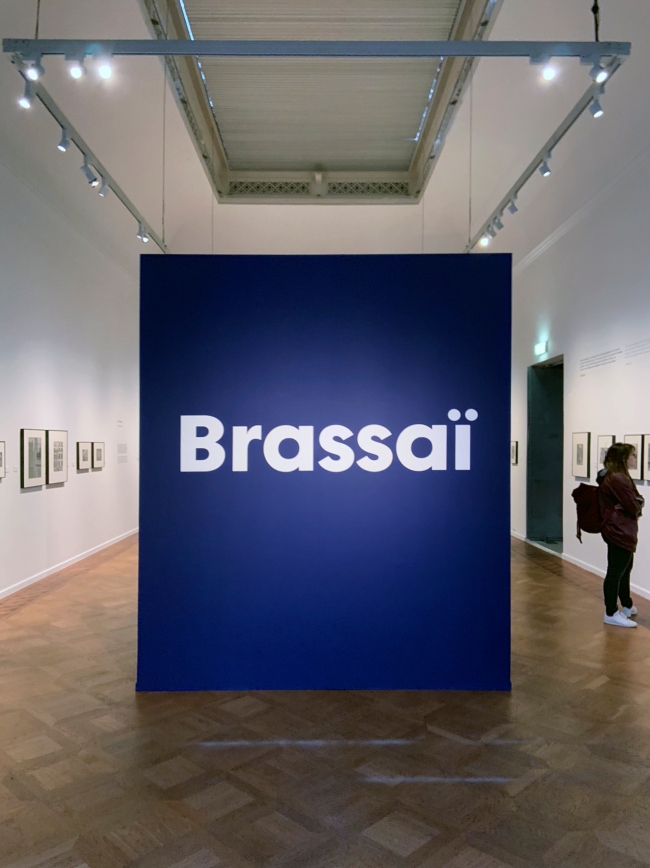

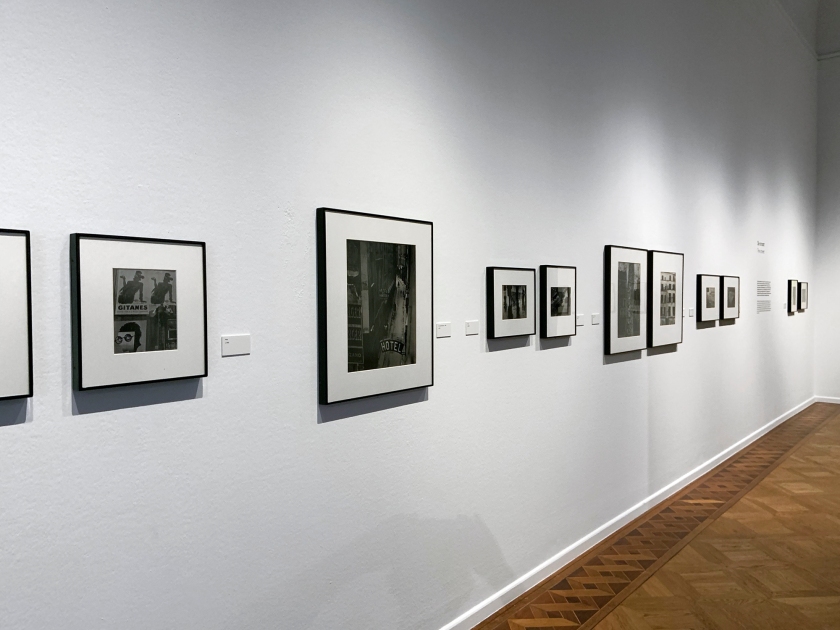
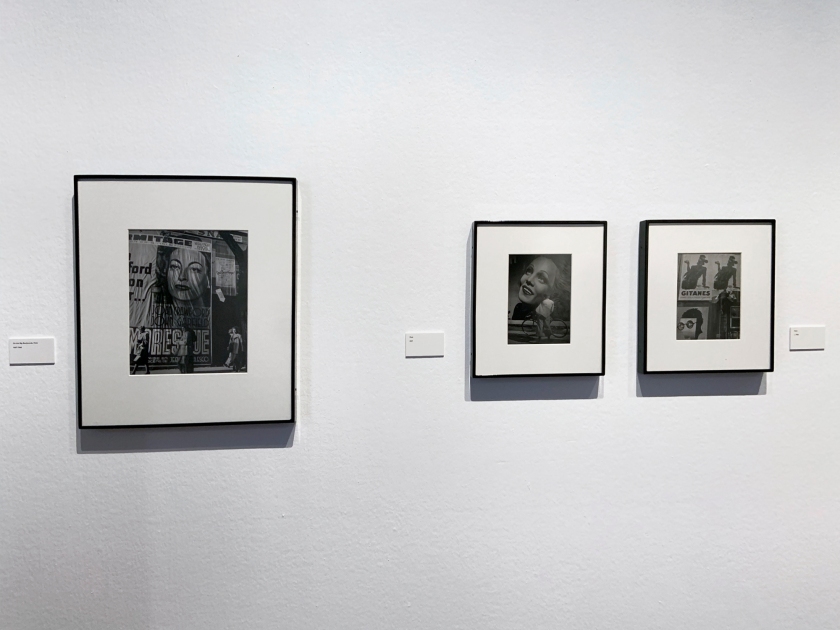
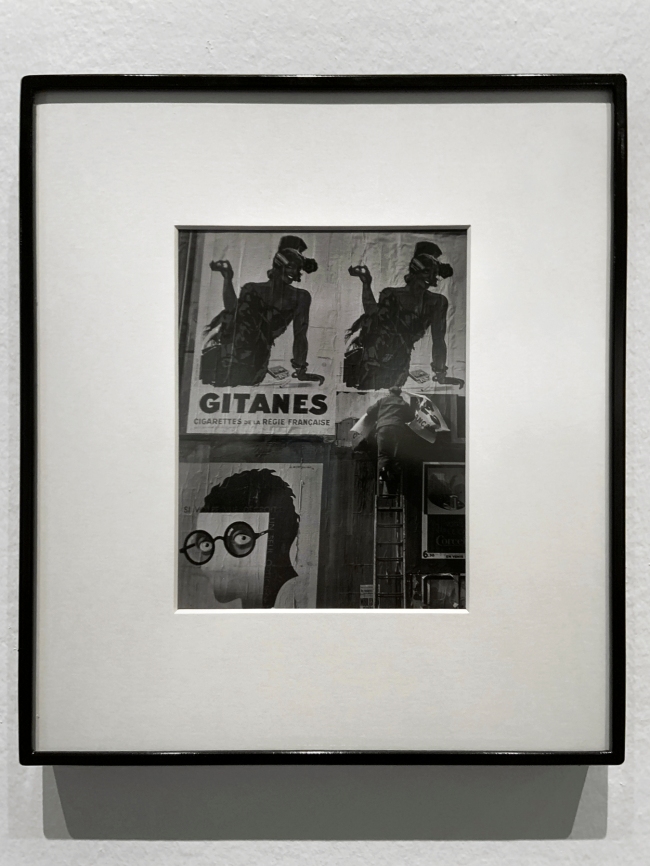
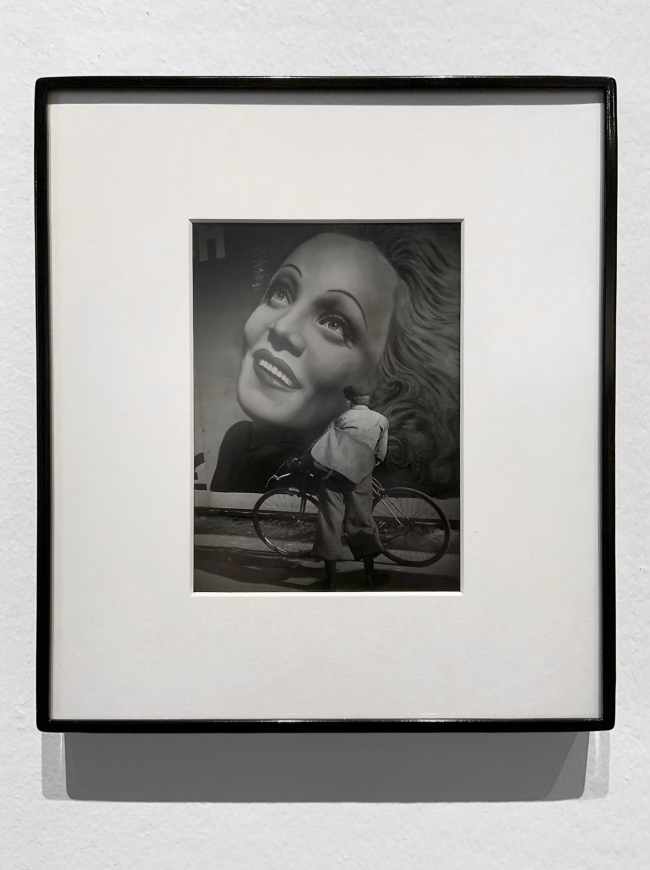
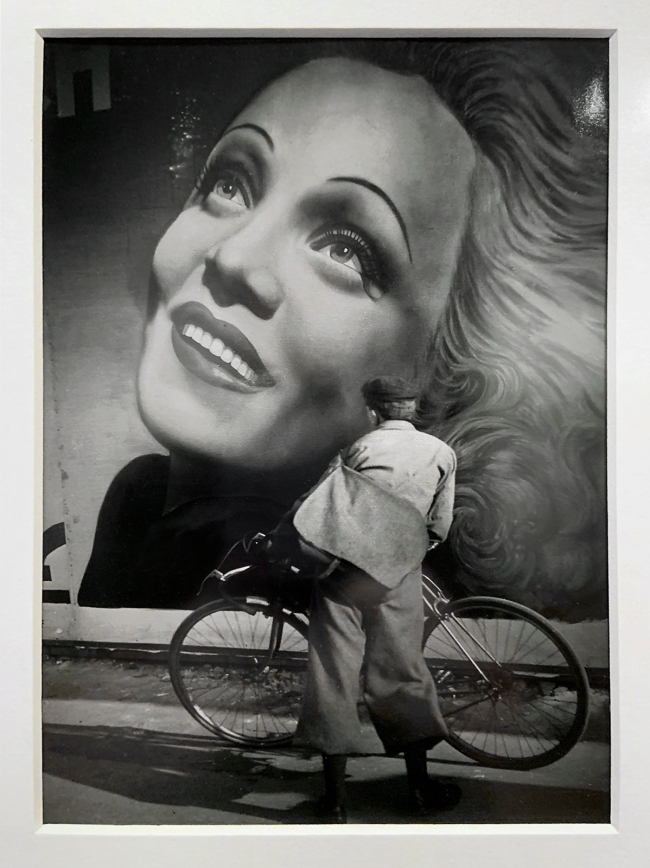
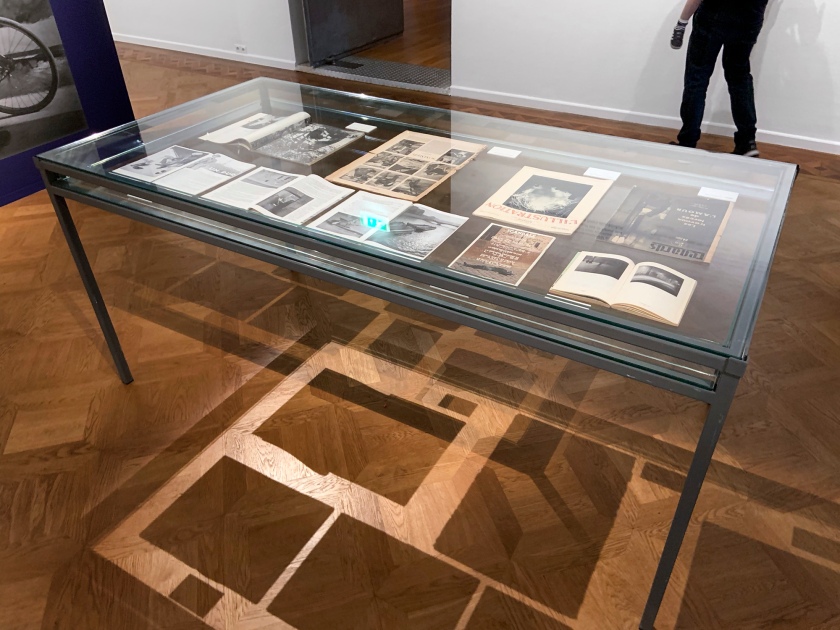
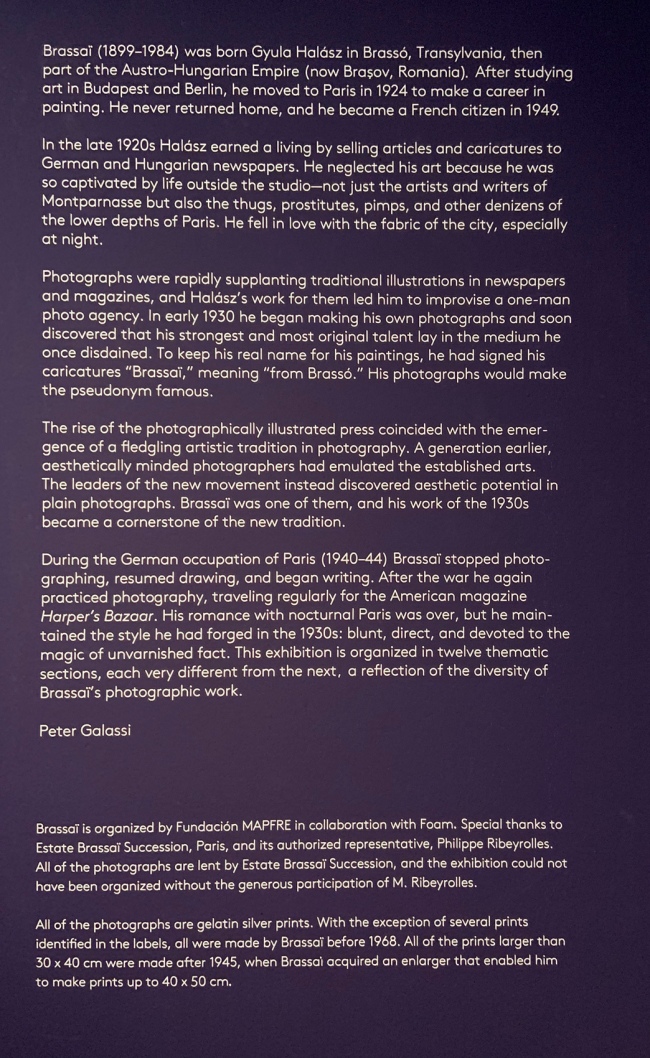
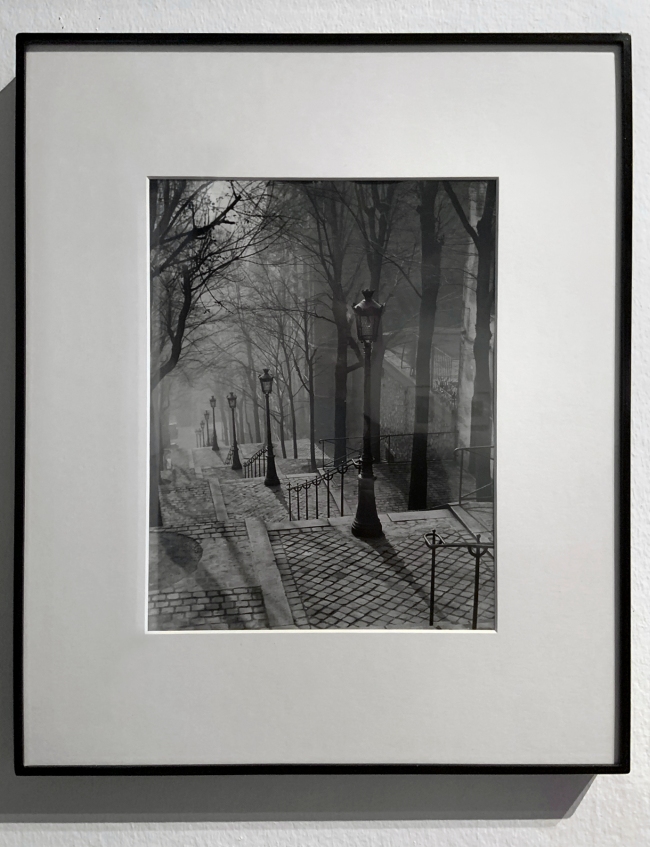
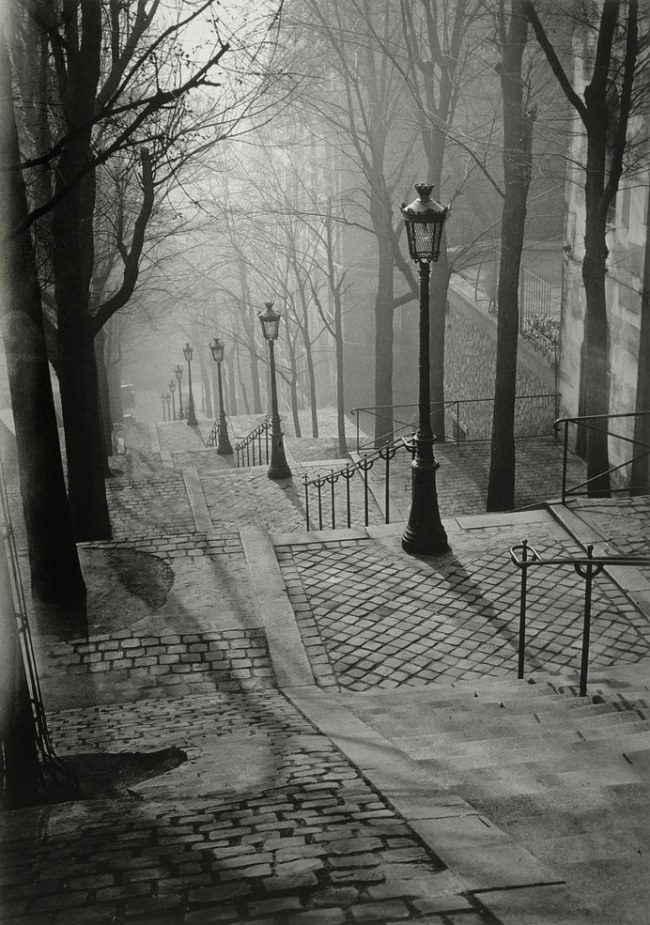




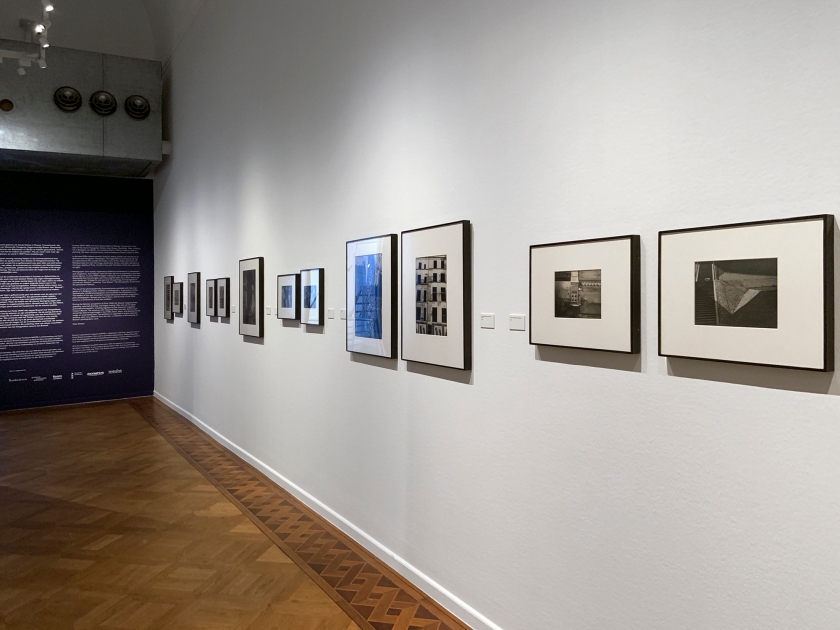
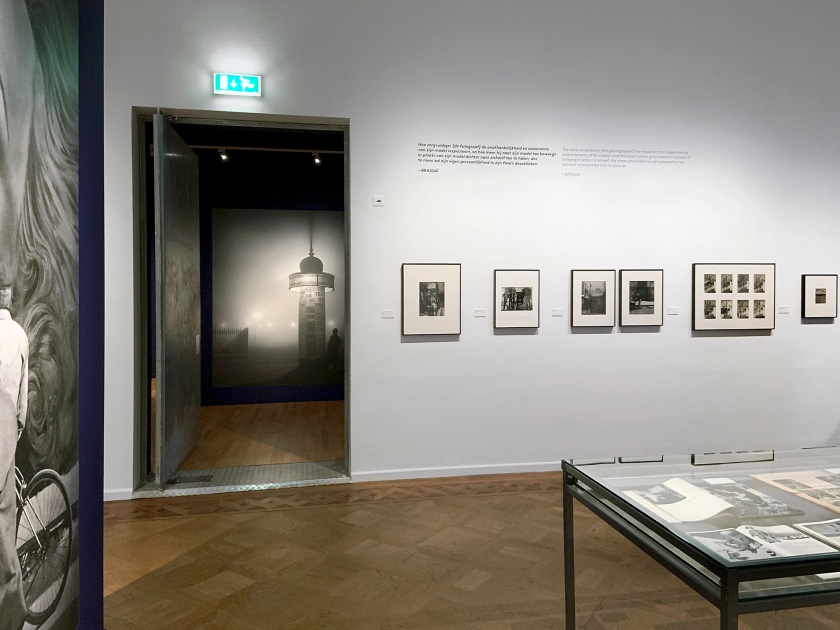

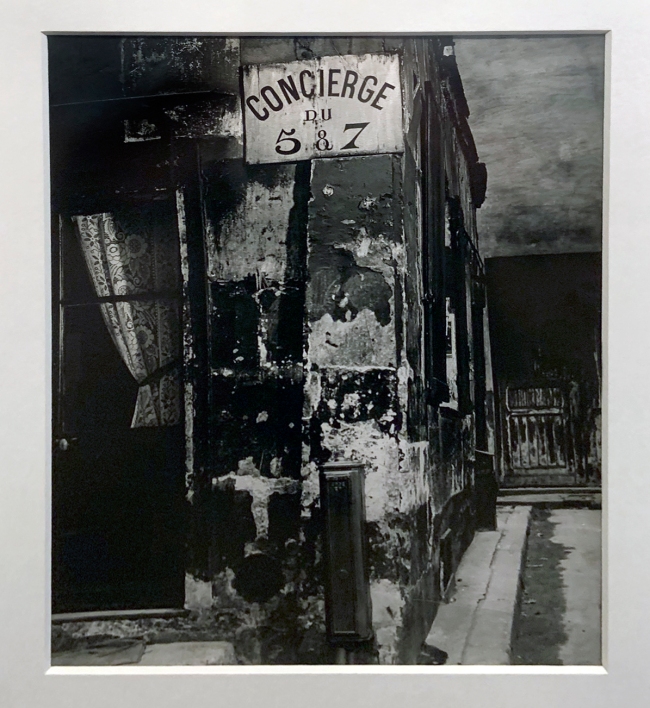
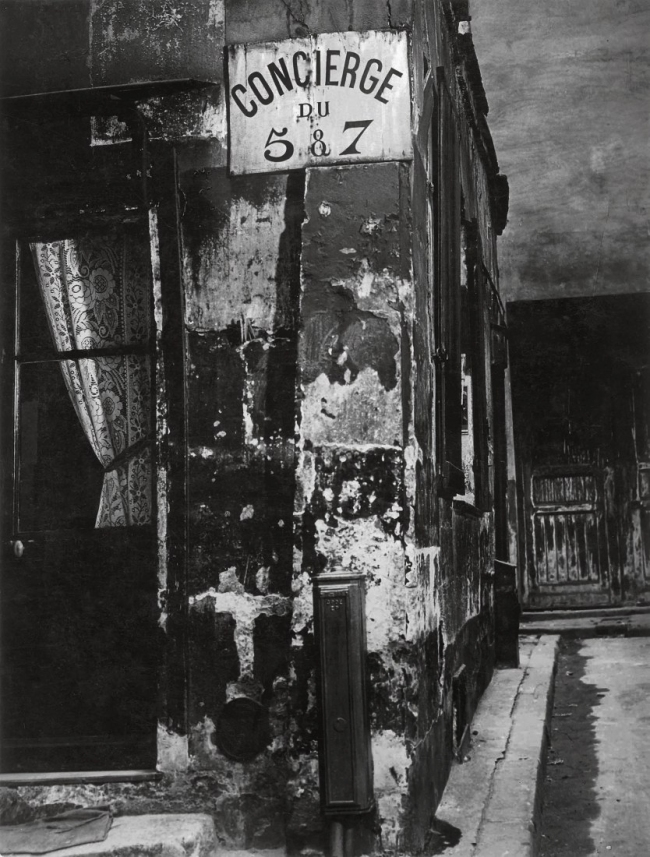
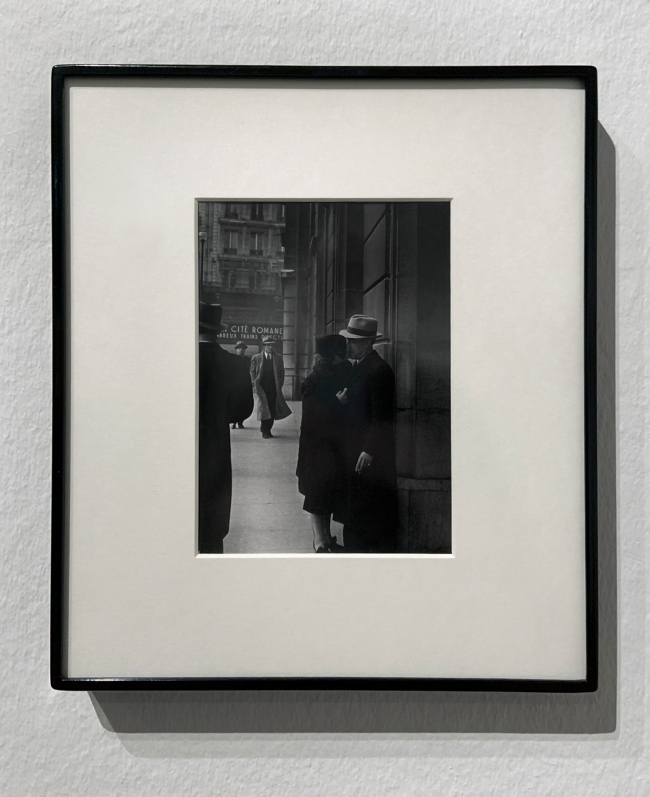

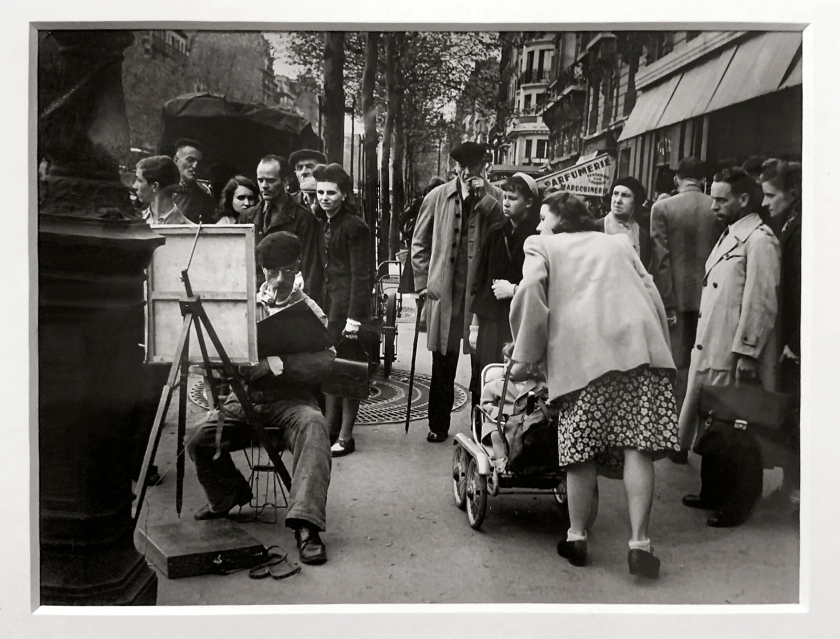

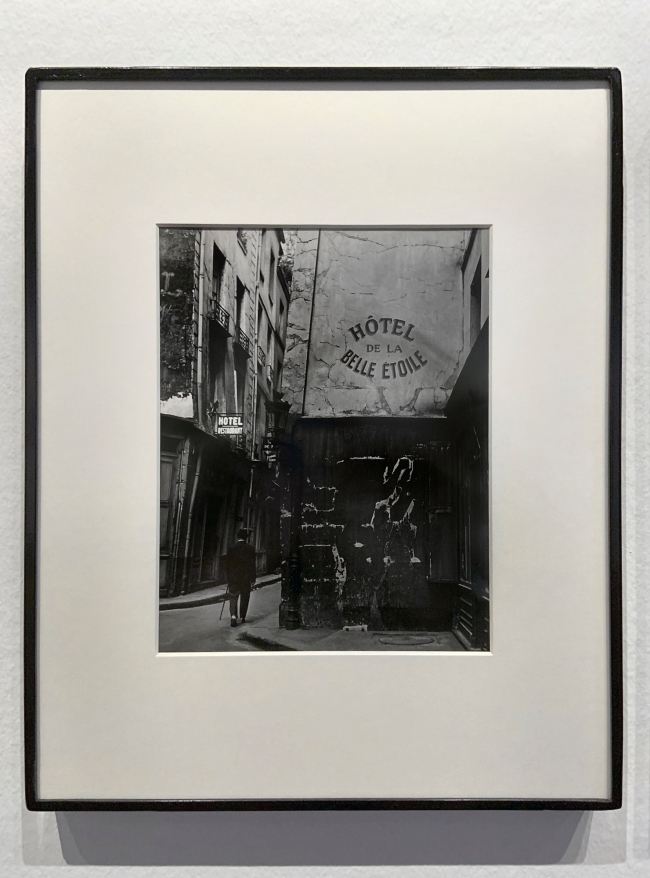

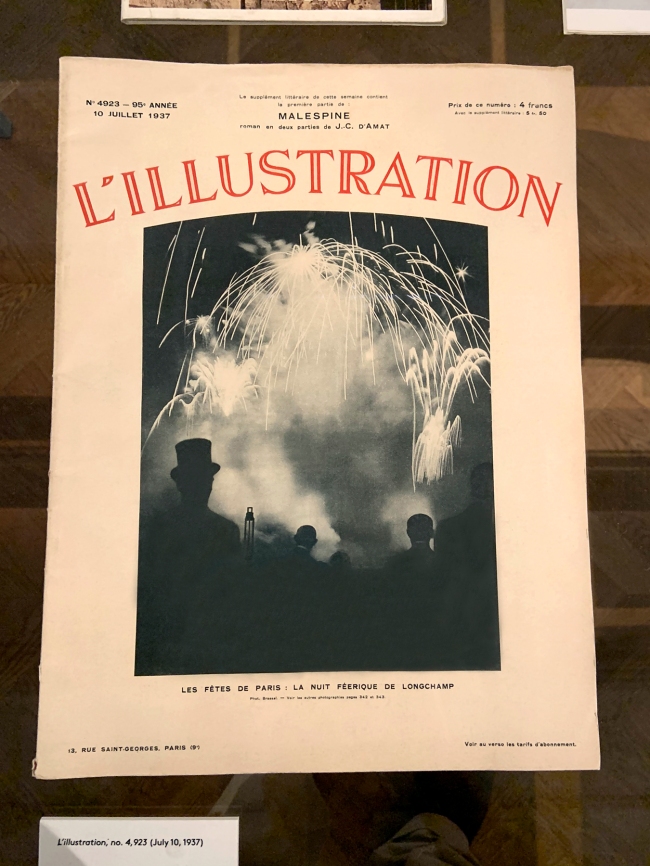
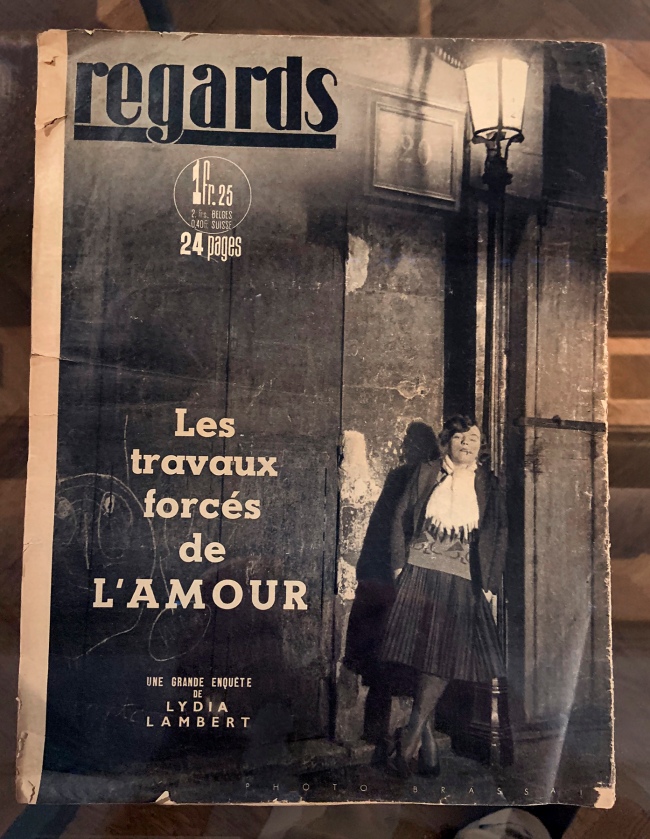
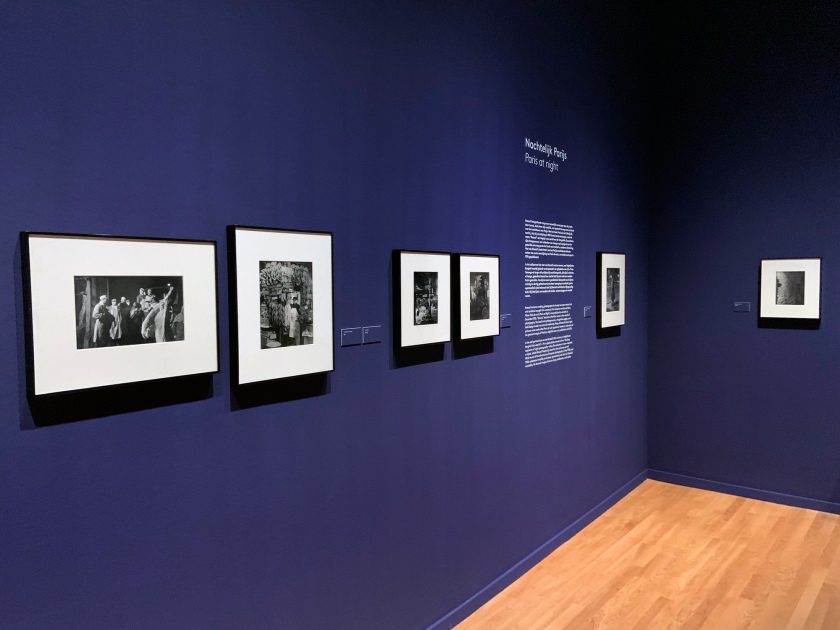

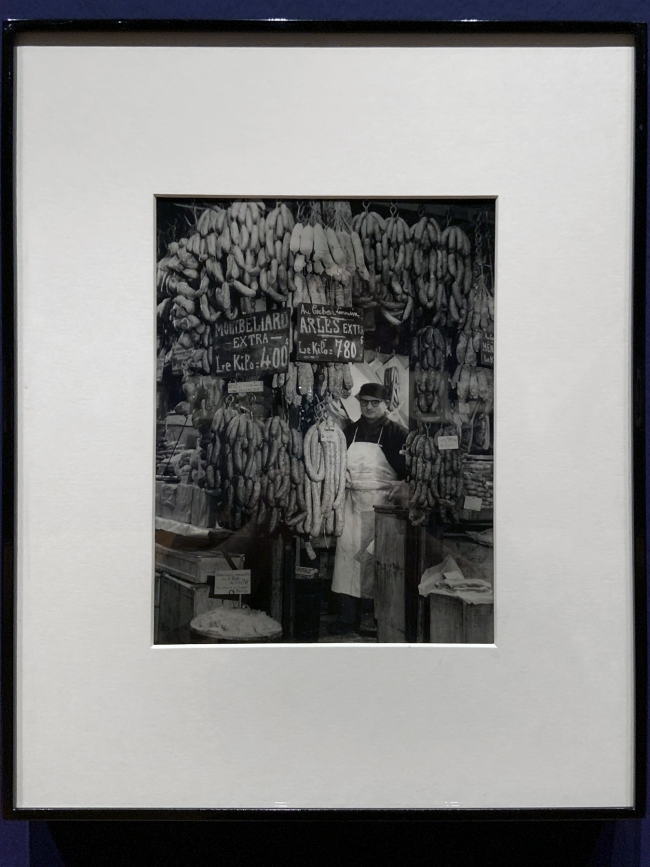
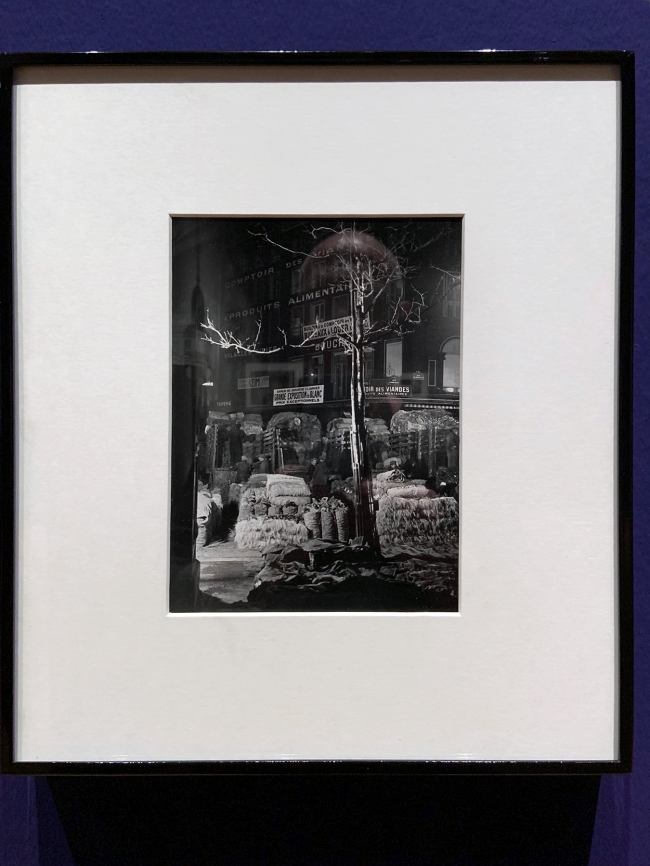

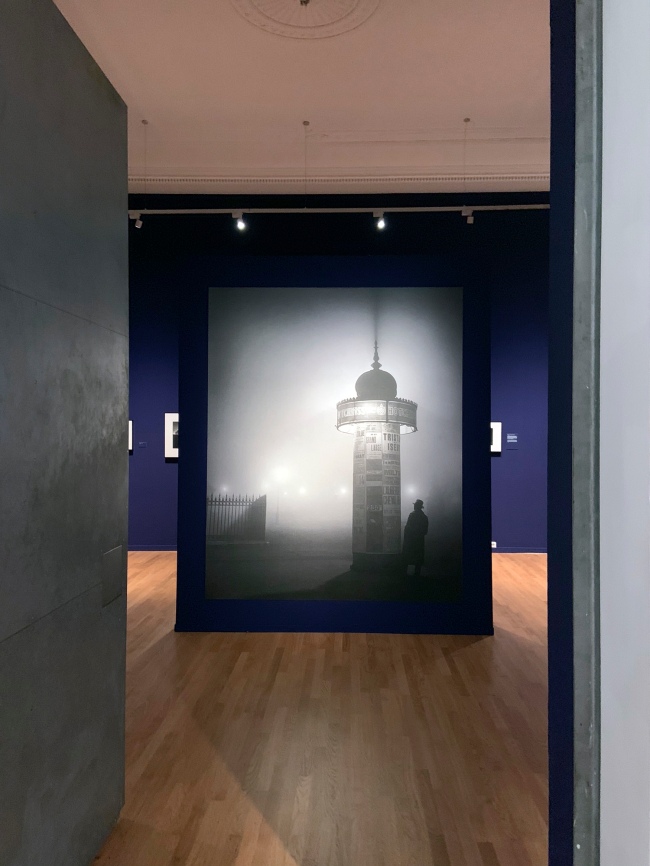

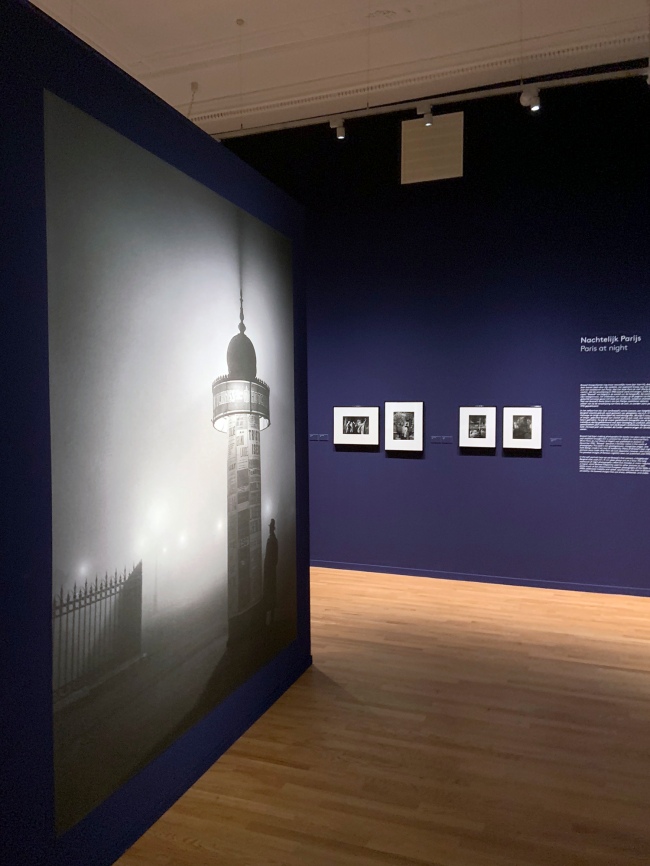
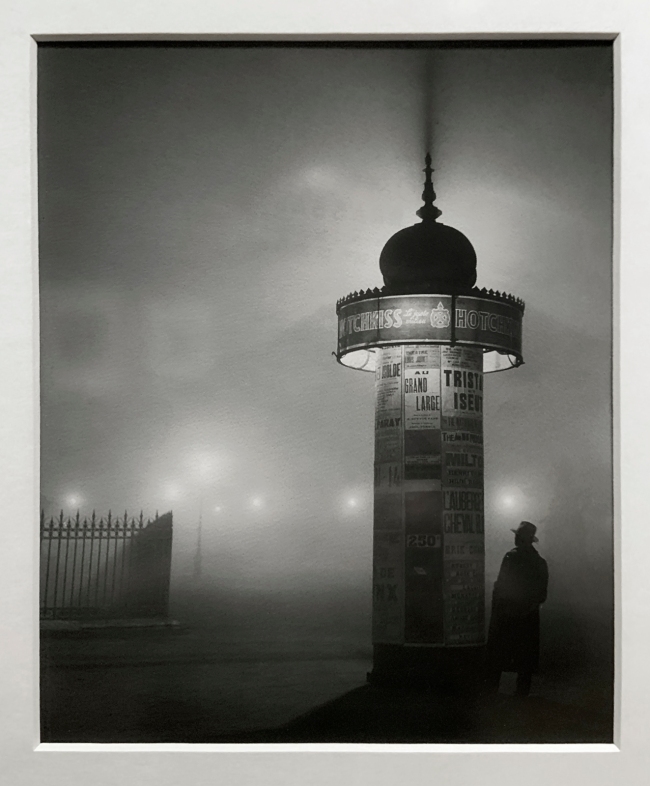
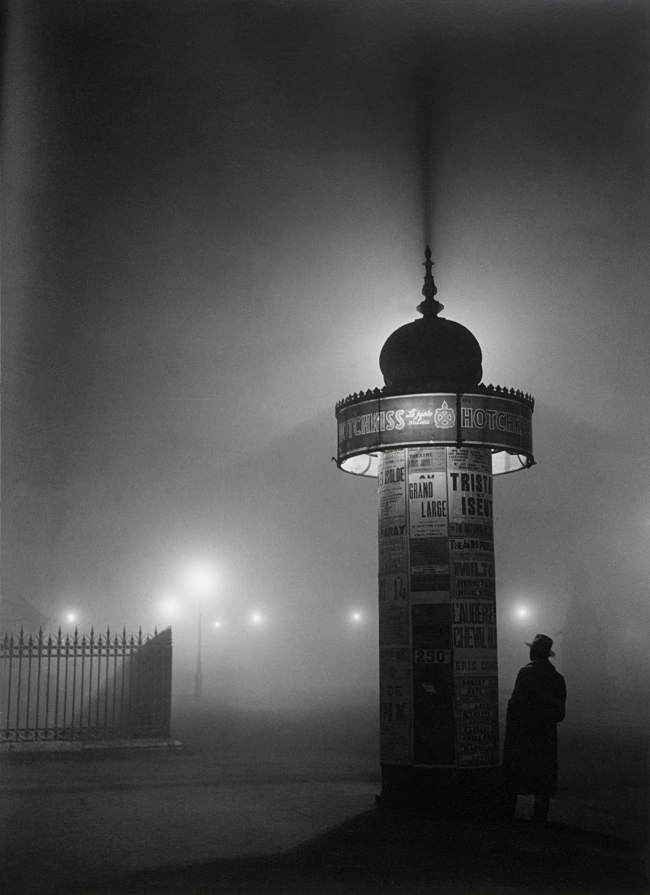

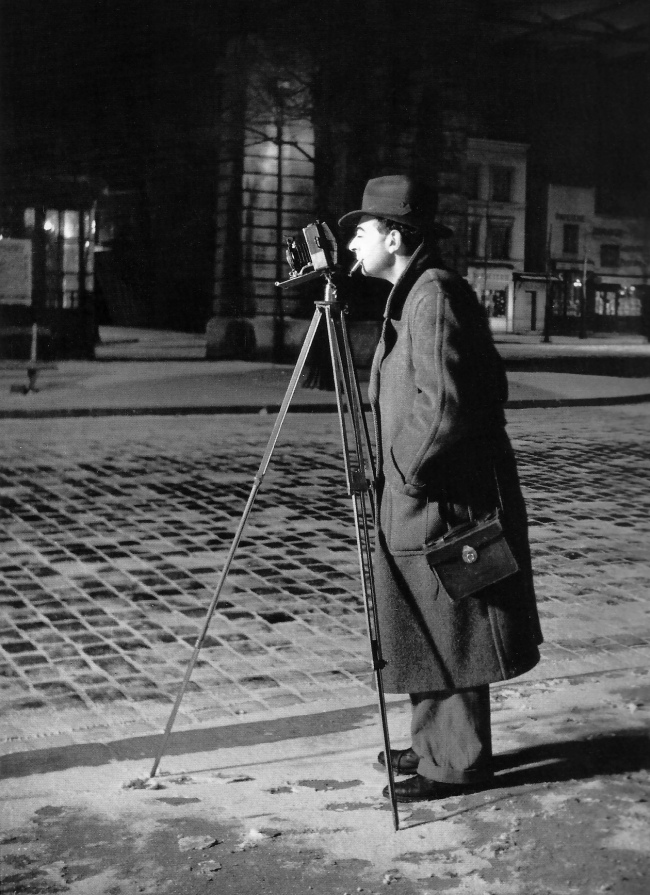
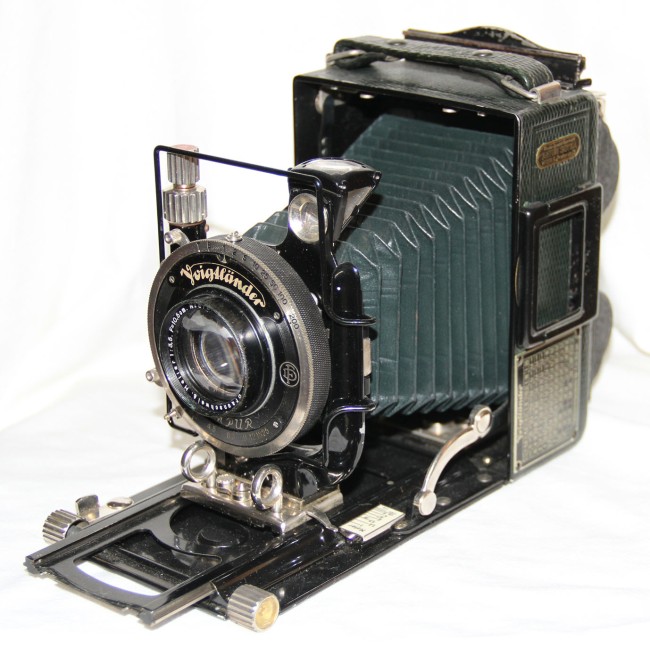
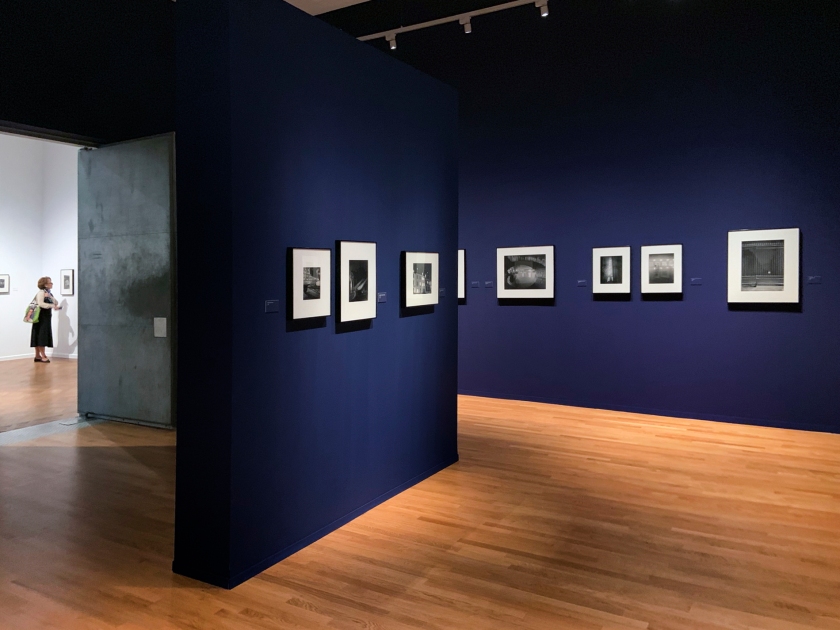
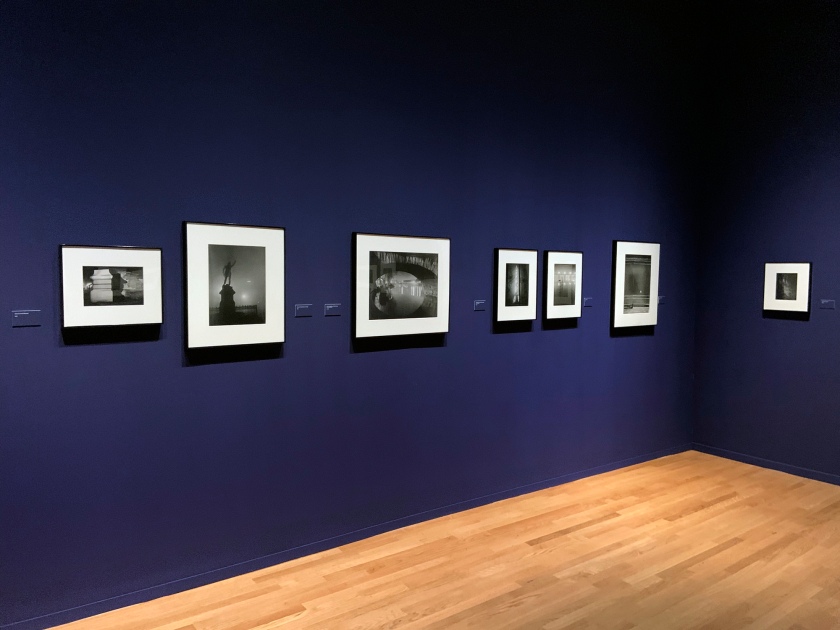

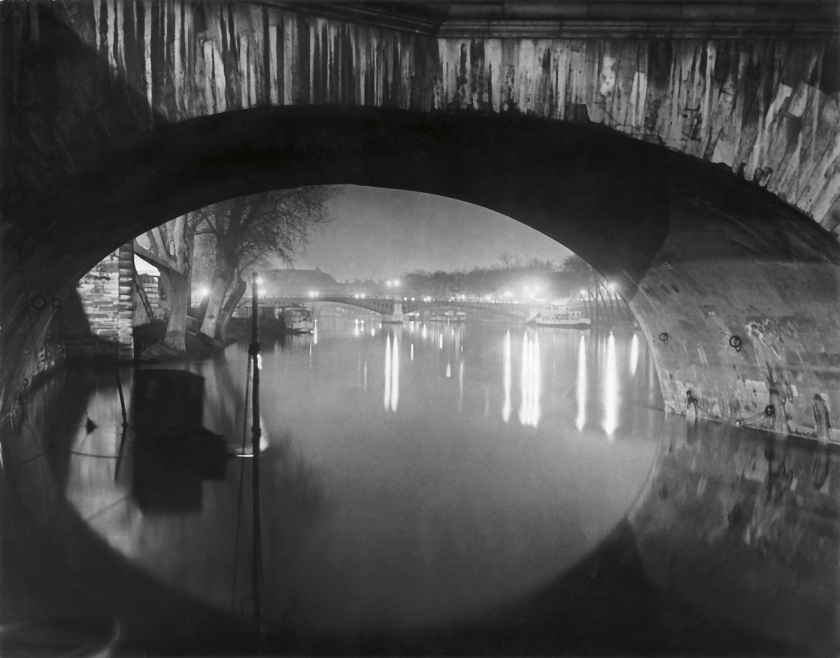

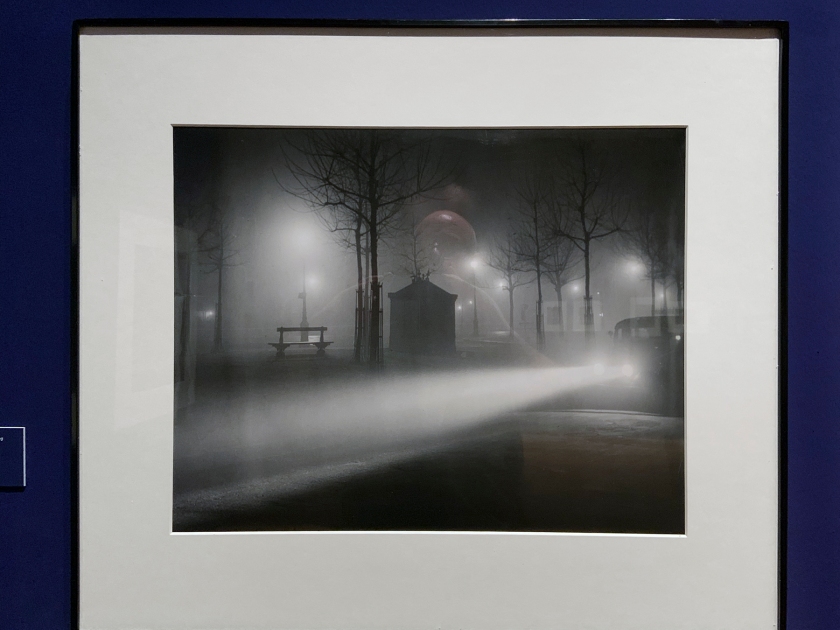
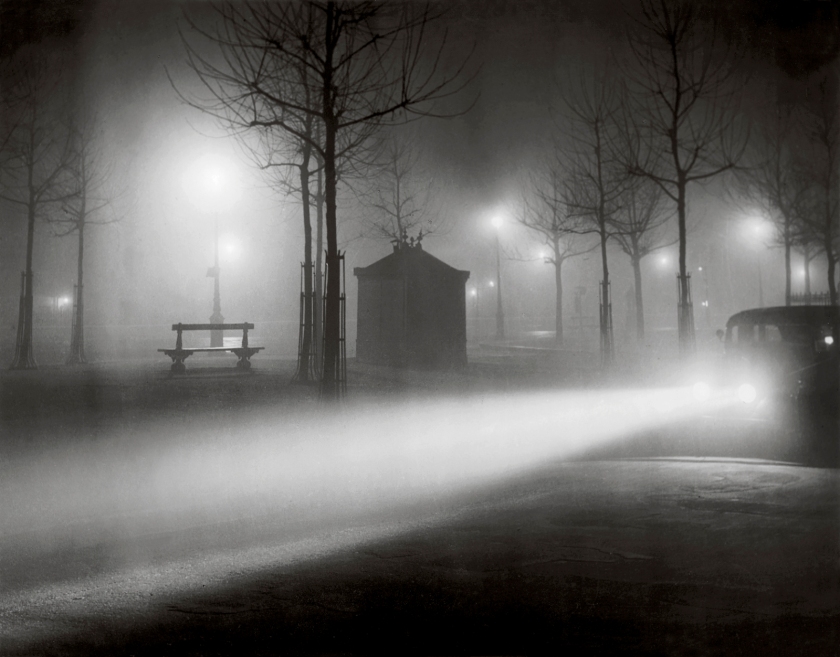
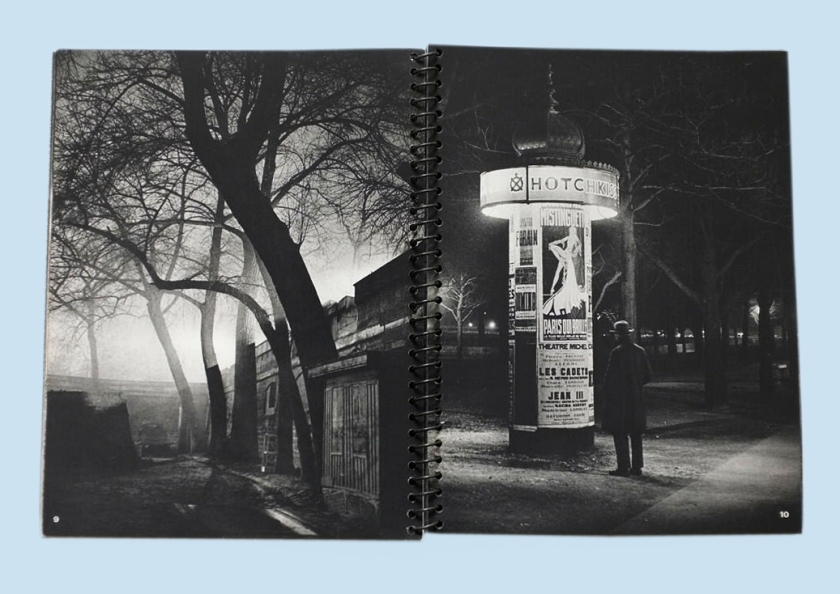
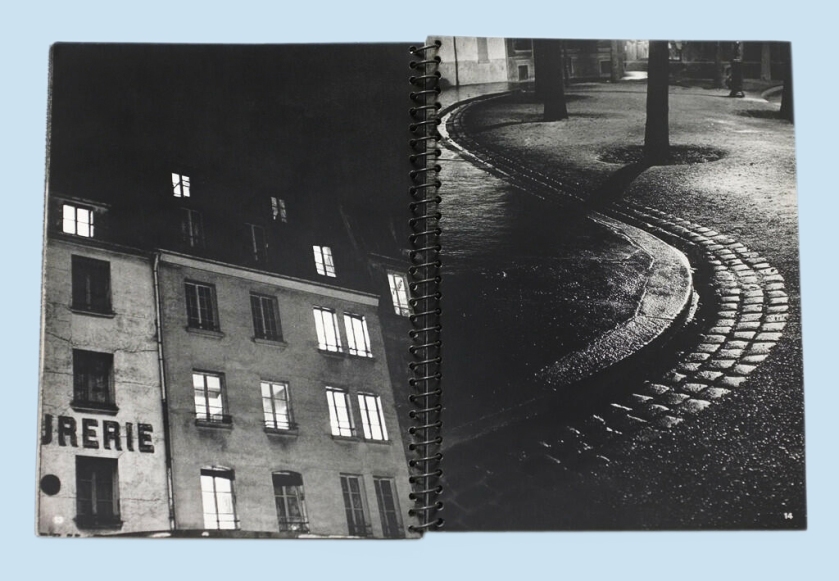

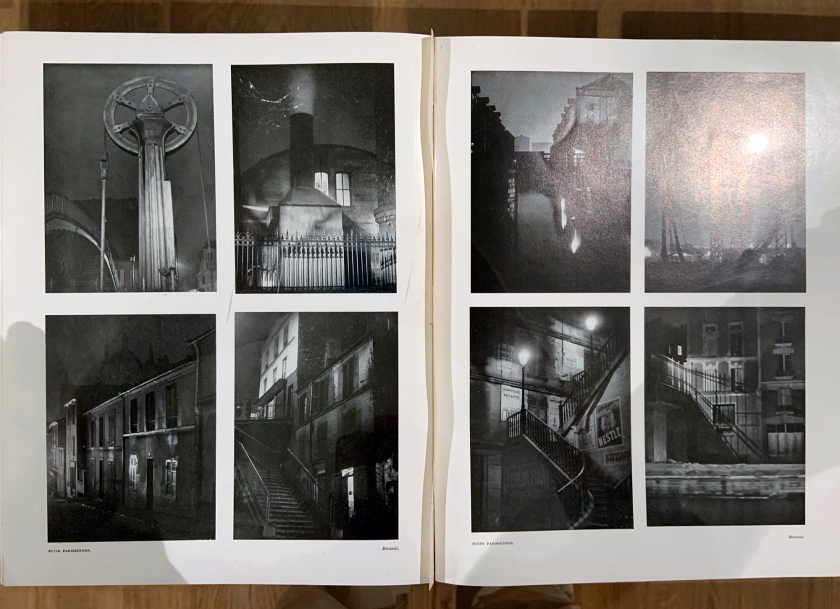

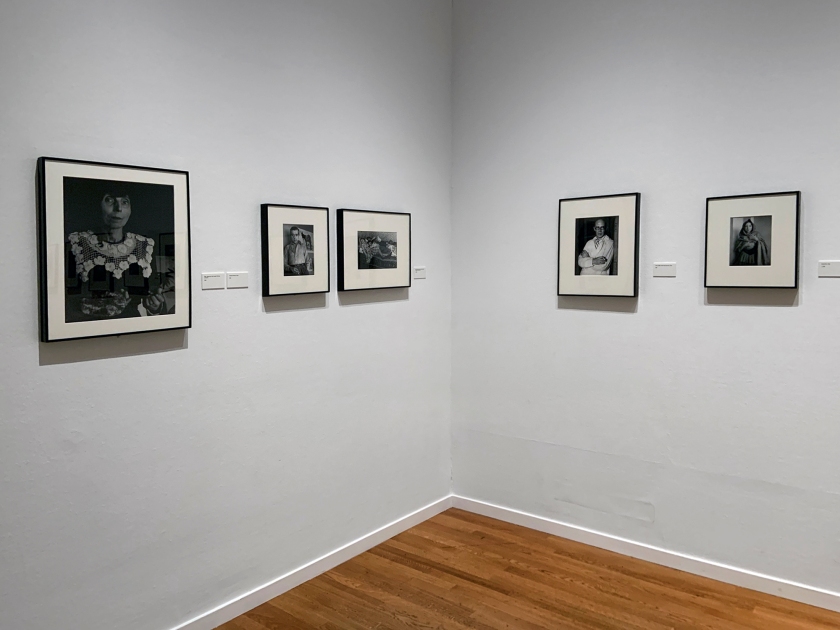

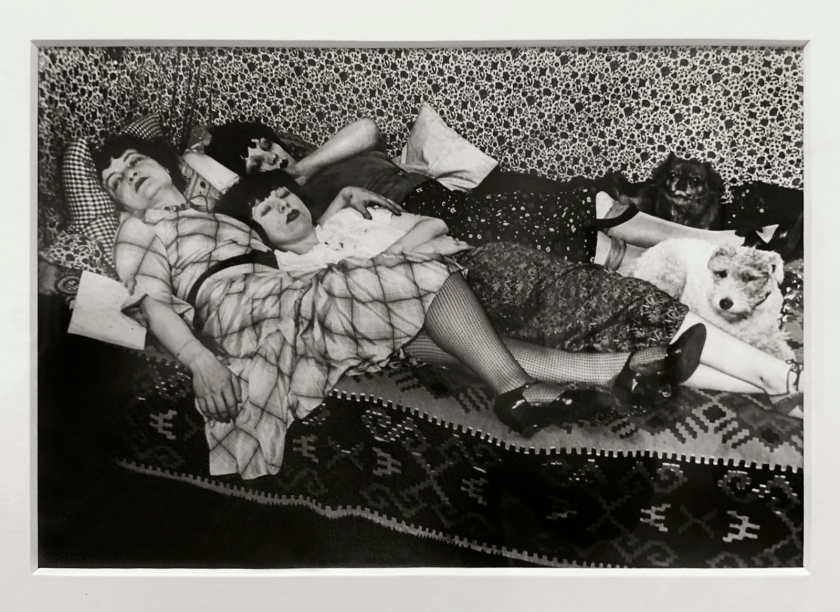
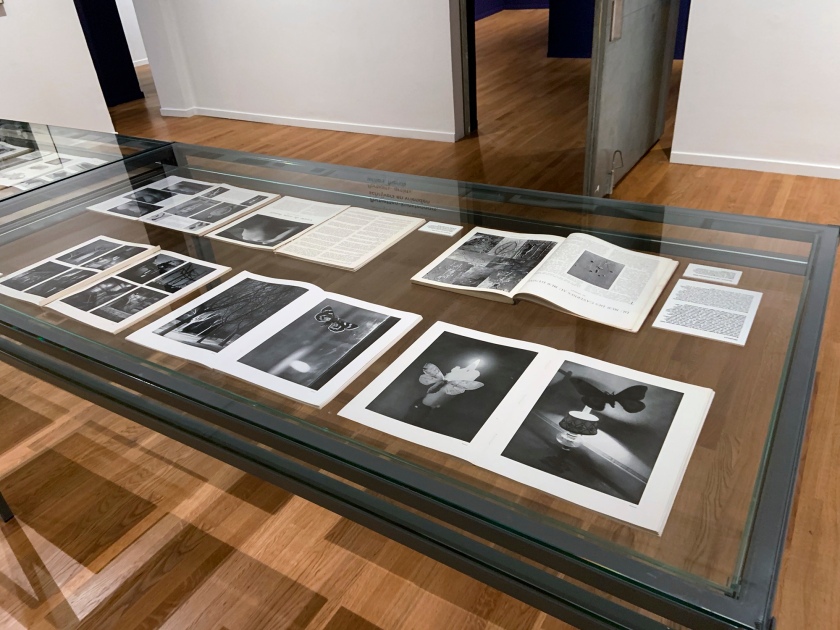
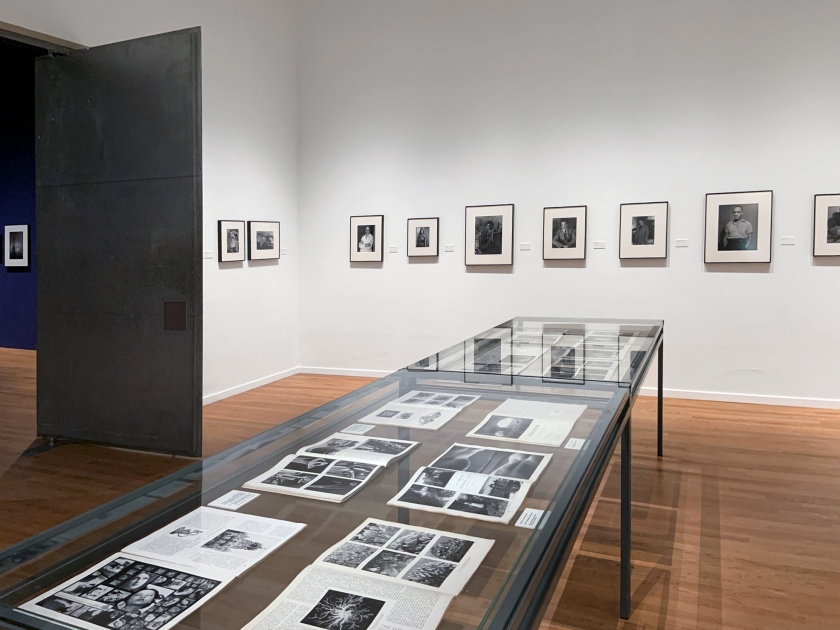
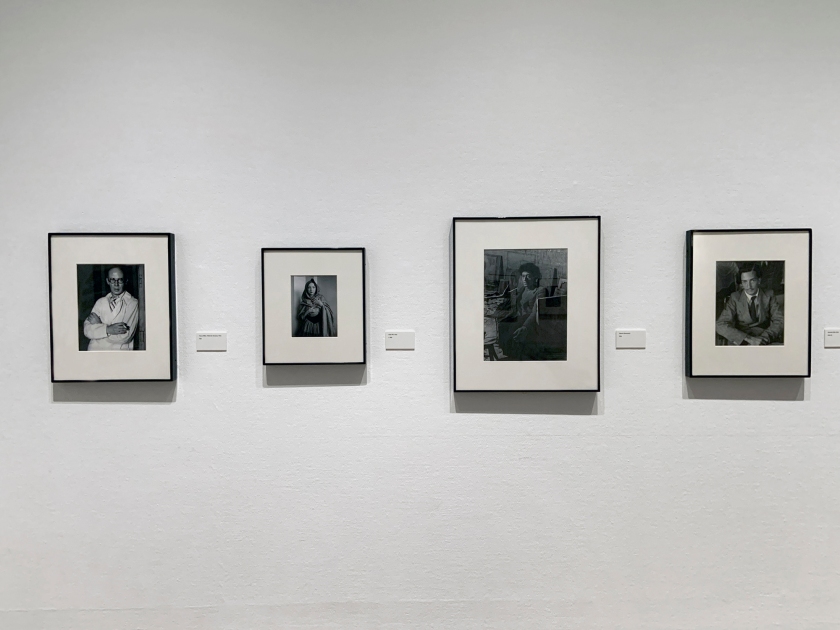
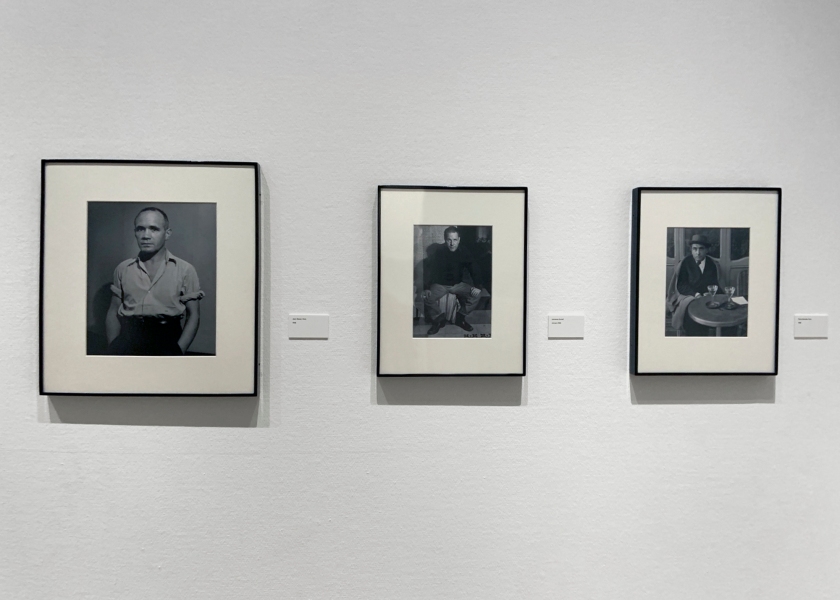

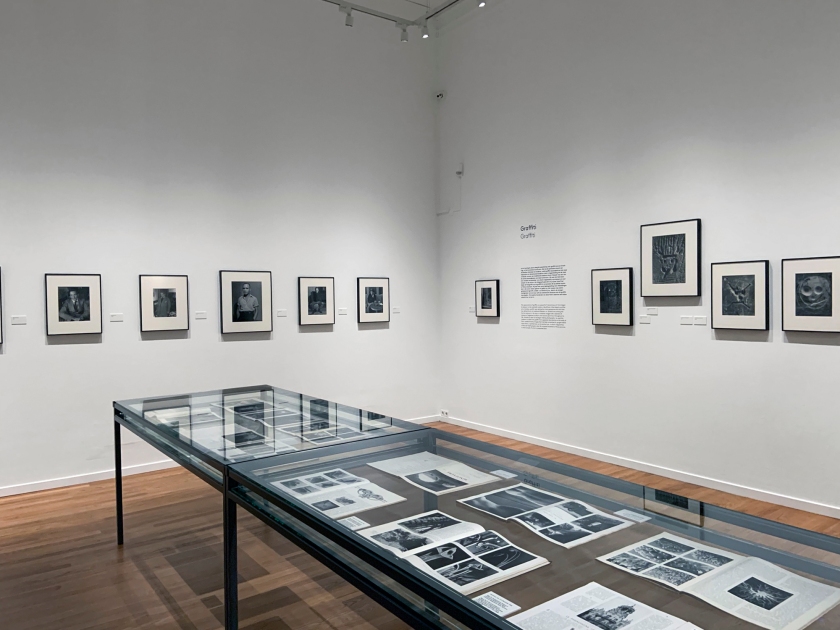
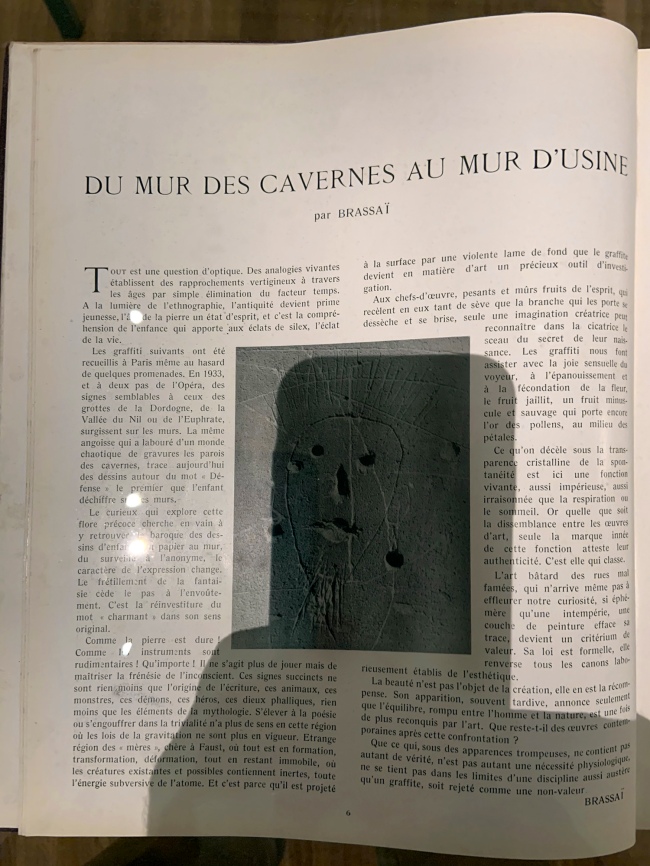
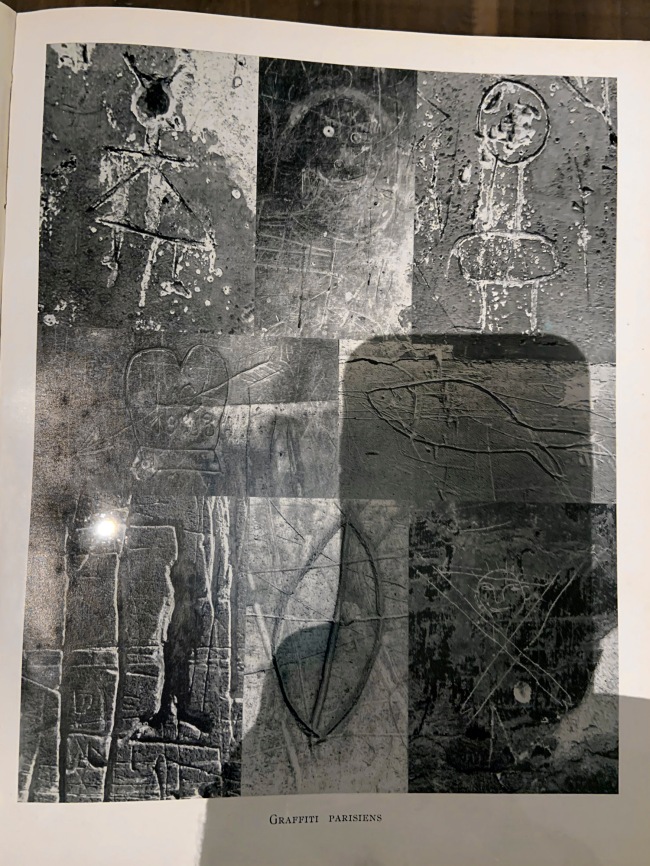

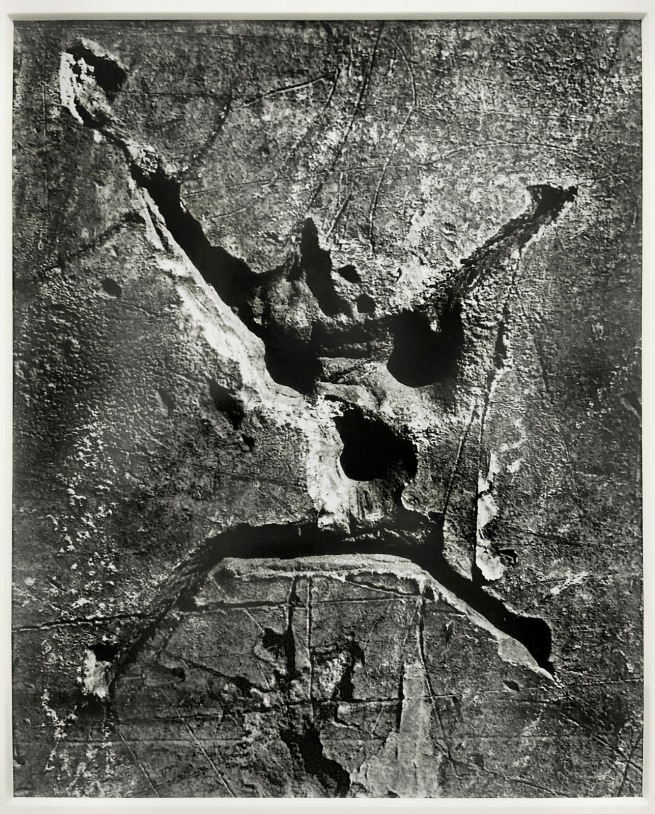

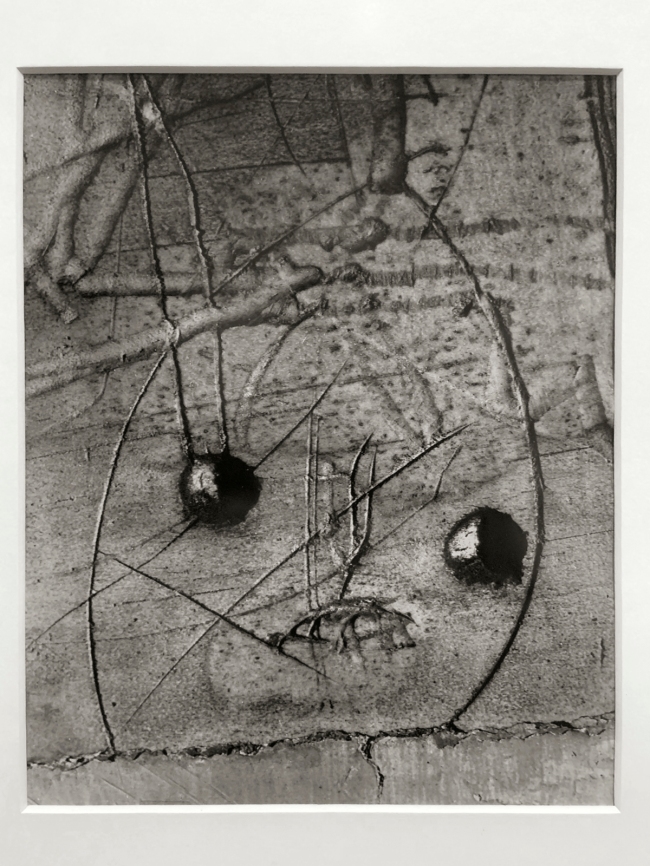


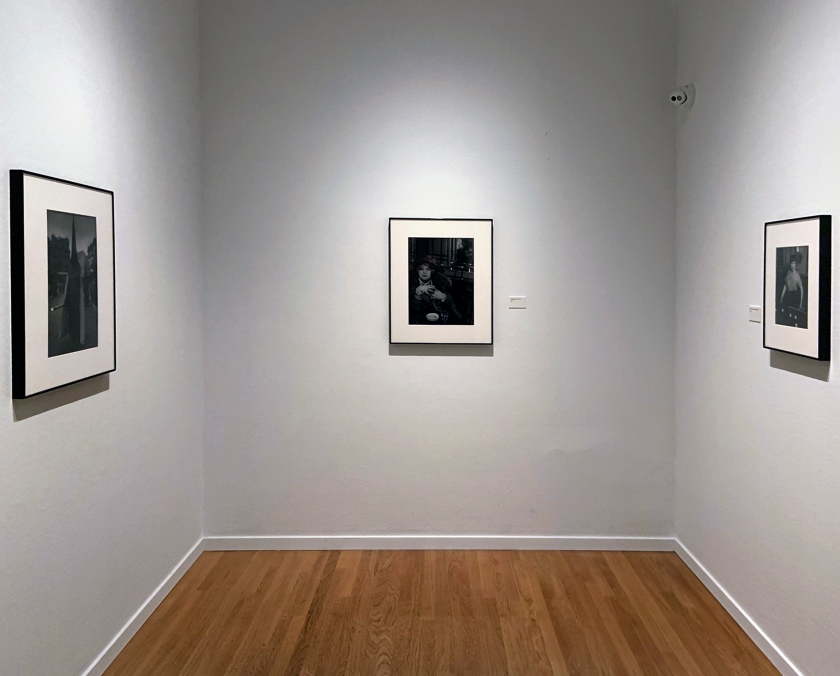
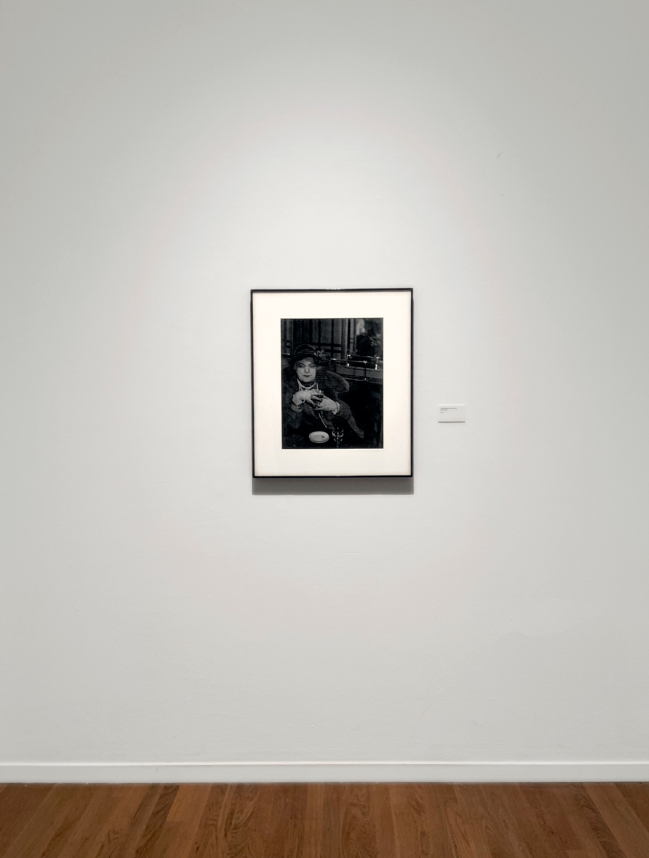


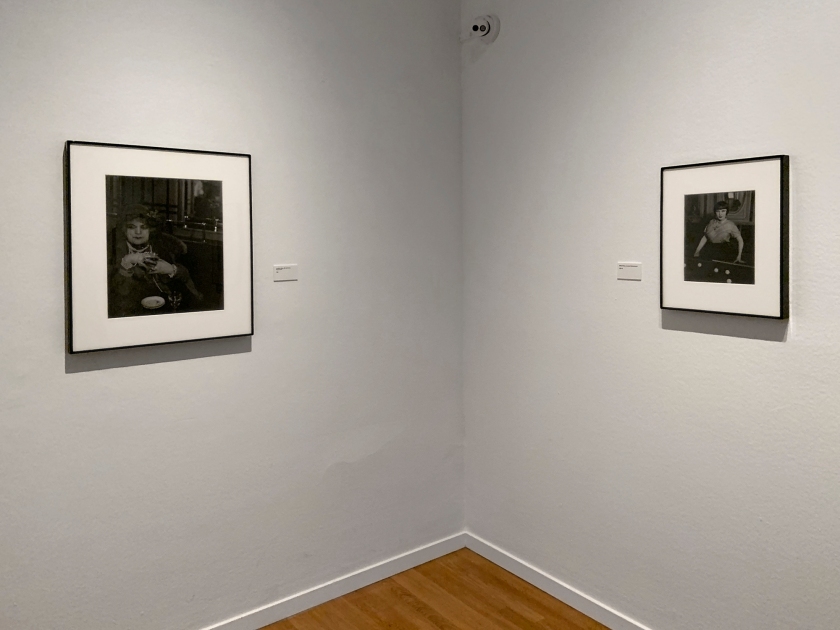
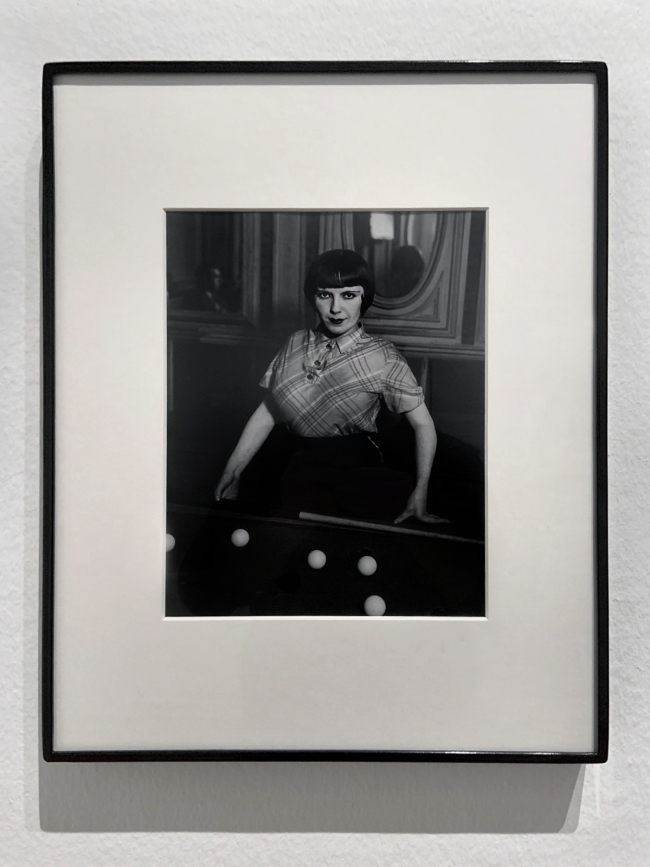
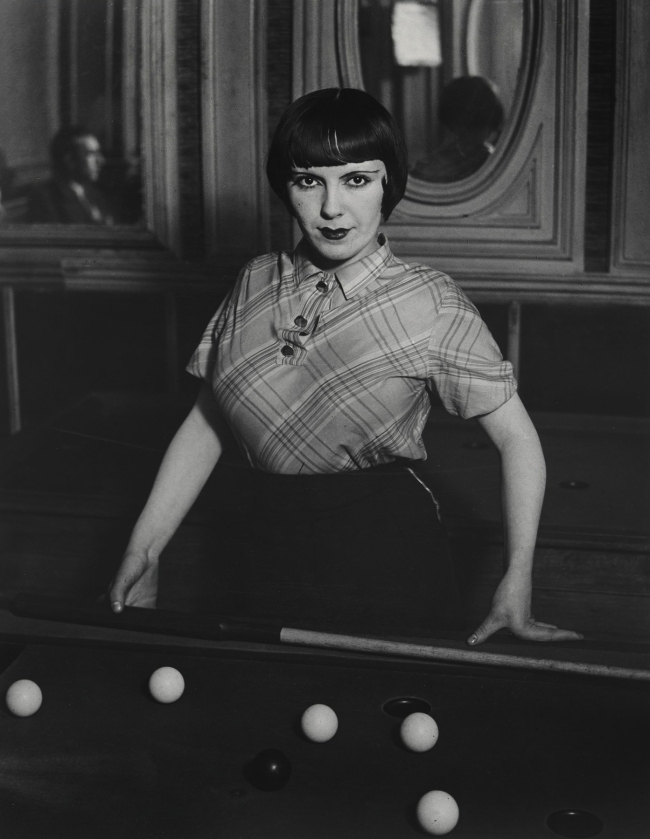
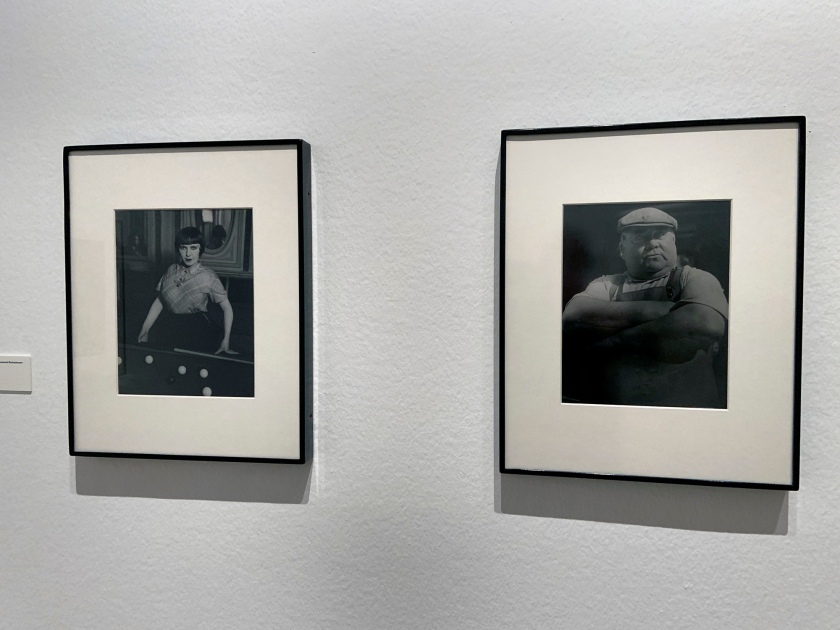

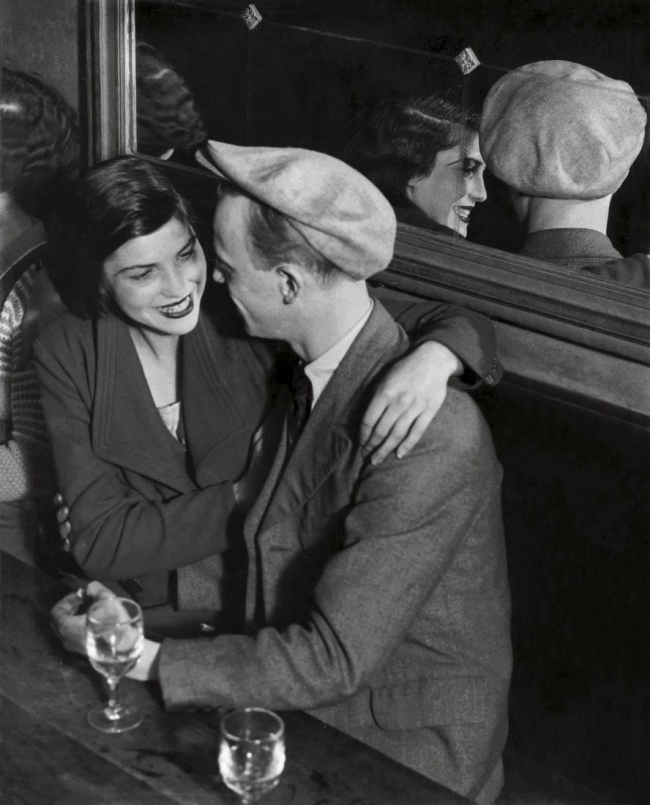

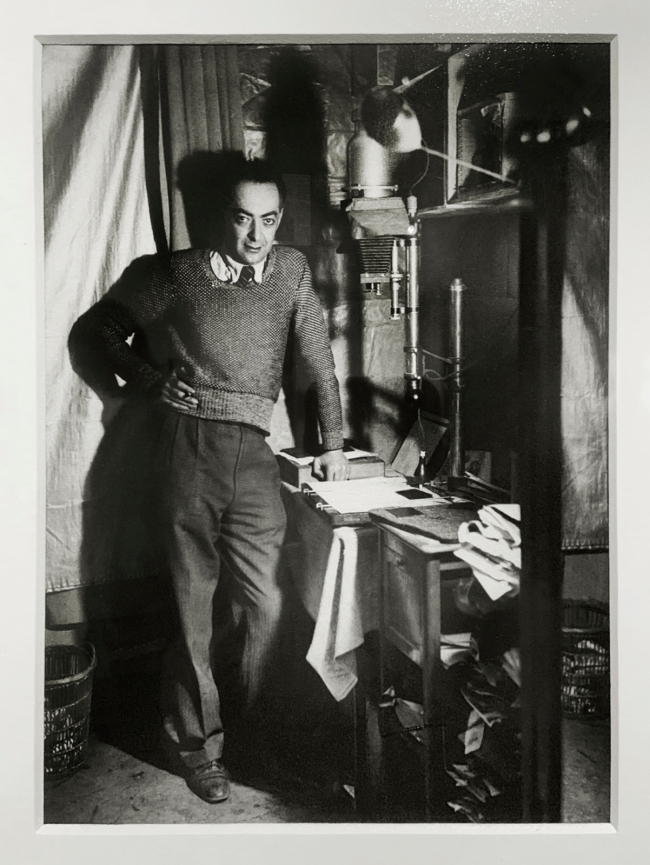
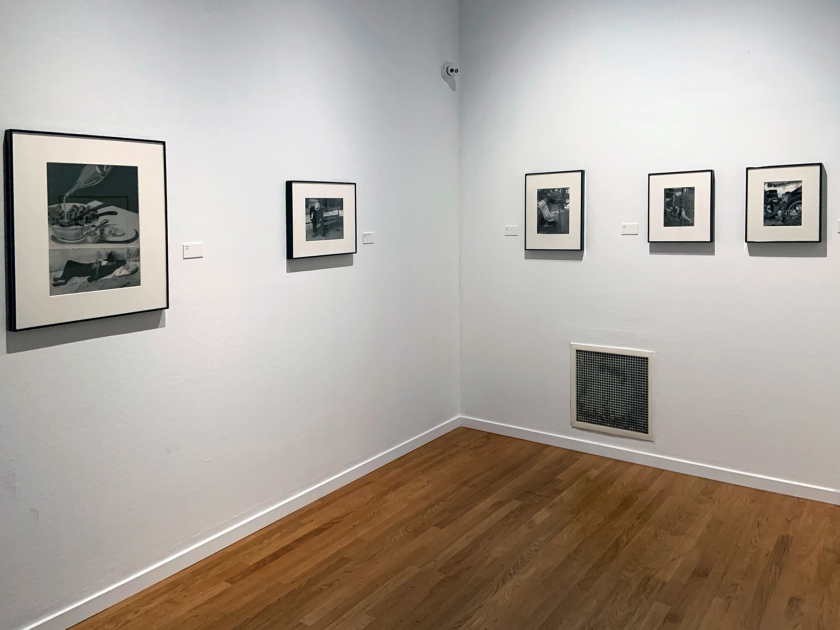
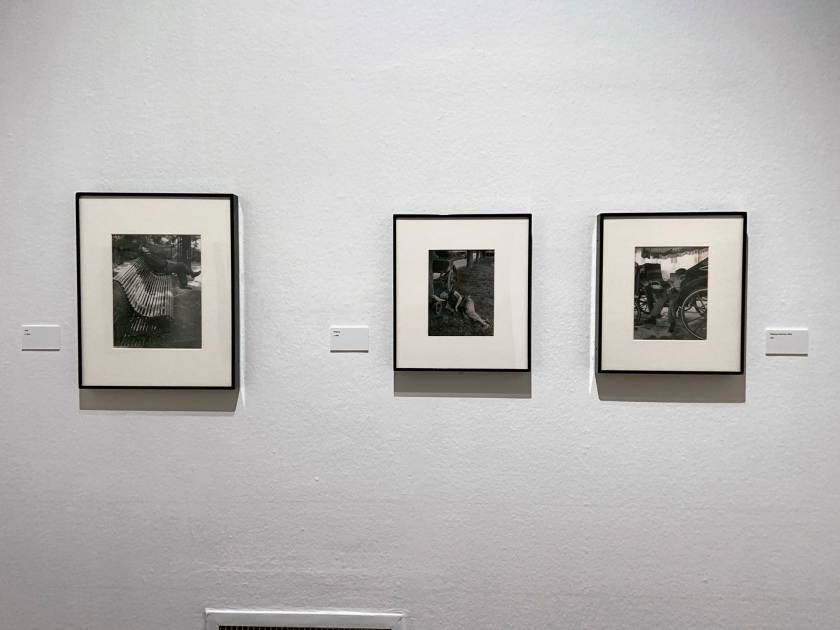
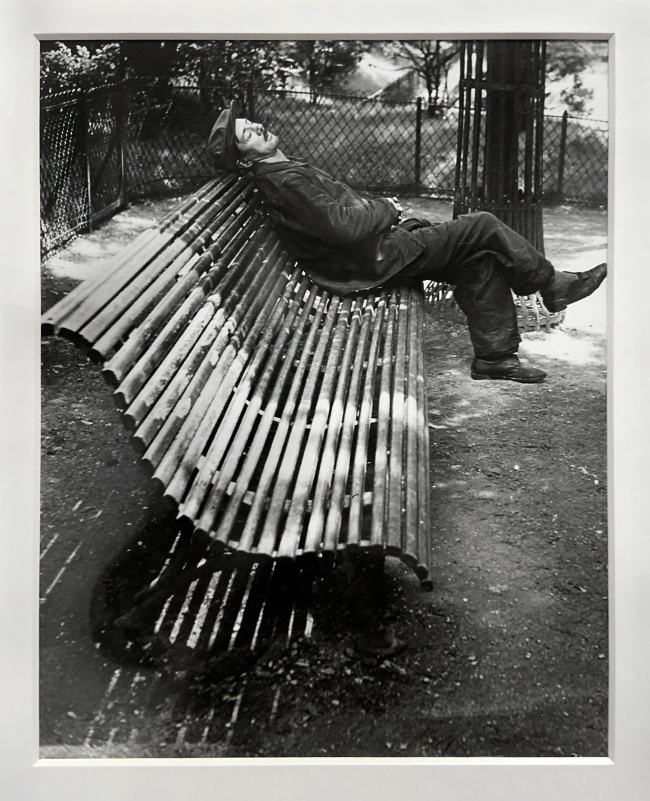
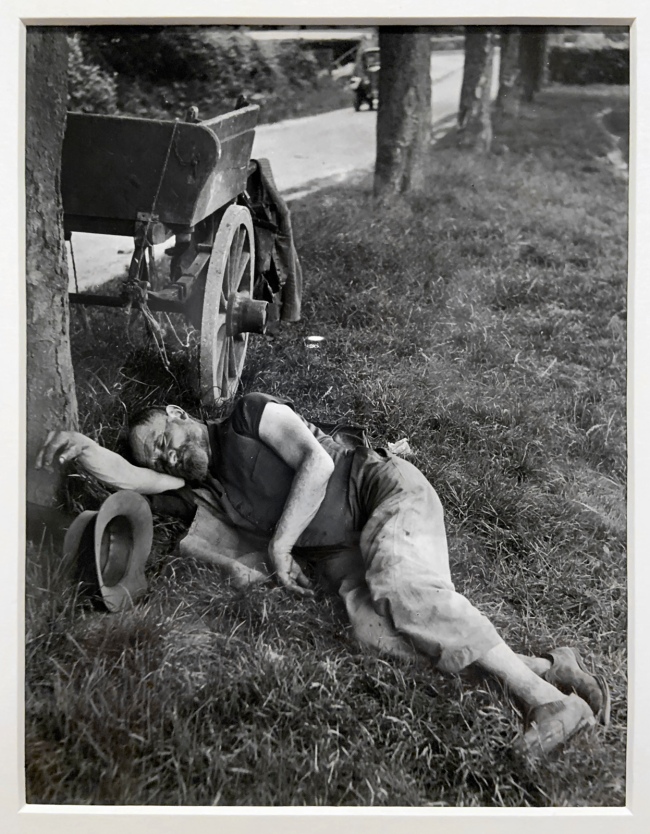

You must be logged in to post a comment.